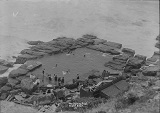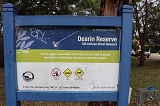December 1 - 31, 2025: Issue 649
History Insights for the Year: 2025
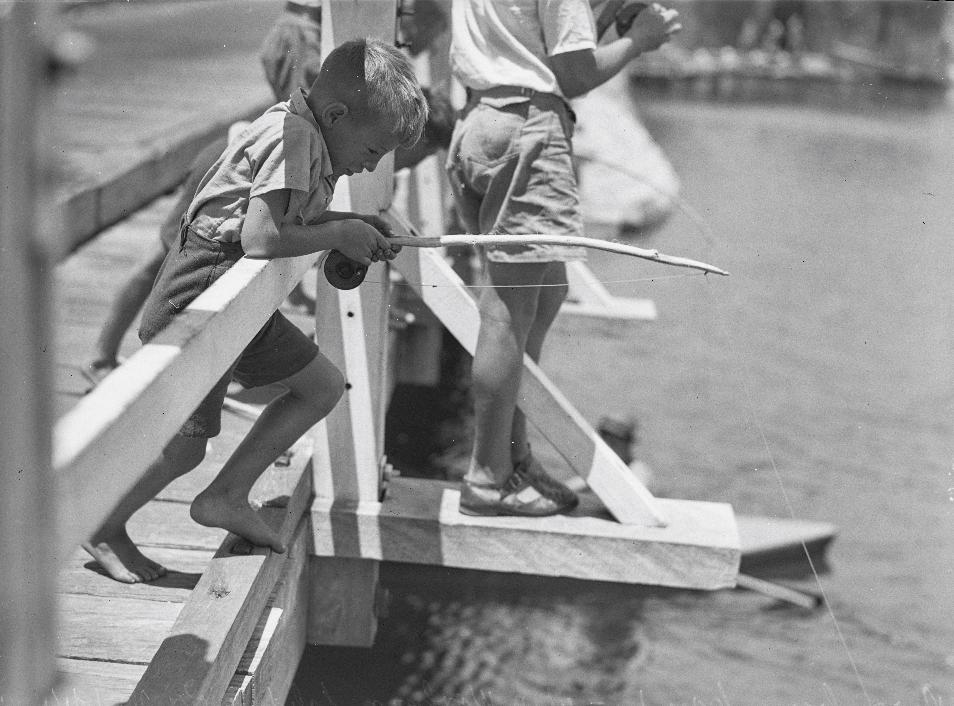
Little boy fishing on Narrabeen Bridge (beach end one) from Album 'Narrabeen camp war workers holiday', picture taken 26 January 1944 / photographed by Alec Iverson, Item: SLNSW_FL9550120 courtesy Mitchell Library, State Library of New South Wales and Courtesy ACP Magazines Ltd. Taken for, but not used in, Article: WAR WORKERS ON HOLIDAY, Pix Volume 13, No.6, February 5 1944 Retrieved from http://nla.gov.au/nla.obj-479760111
January
February
Prince Charles on the Hawkesbury with Timbertop Housemaster Roderick West (1933–2016) in May 1966. Chris is in the dark top with white stripe down the side at the back. Photo: Chris Hendrikson
On February 2nd 2025 the Narrabeen Lakes sailing Club celebrated its 120th anniversary through a regatta held on the waters off Jamieson Park and with a barbecue and a cake – of course!
Dr. Sophie Scamps, MP for Mackellar attended the celebrations, along with Deputy Mayor Cr. Ruth Robins, an Elanora Heights resident.
The club says ''If you missed out on the celebration, come on down to Jamieson Park to see how NLSC members spend Sundays sailing on Sydney's safest waterway. Learn to Sail classes are held on Sunday mornings, followed by coaching for more experienced young sailors who can then go on and join in the afternoon races sailing in the two handed Heron boats. There's something for everyone at Narrabeen Lakes Sailing Club.''
This coming March Narrabeen Lakes Sailing Club will host the 2025 Sabot Southern Zone NSW Championship.
The NLSC says; ''Bring all your Sabot sailors to the beautiful Narrabeen Lakes on 16th March for a fun and all inclusive regatta. We can’t wait to have the Sabot fleet back at Narrabeen for the Sabot Southern Zone NSW Championship.''
You can find out more about the classes of boats at Narrabeen Lakes Sailing Club on their website: narrabeenlakessailingclub.com
In 2022 NLSC members asked the news service to put out a call for history recollections, photos and anecdotes to share and renew all the records lost in the fire, and wanted Pittwater Online News to run a history page of its own research for the 120th Anniversary.
Although this, alike all lost history subject threads, will remain an ongoing project, there has been 'some stuff collected' since that first request that allows a small celebratory insight on the great Narrabeen Lakes Sailing Club. Happy 120th NLSC!
With the last weekend of Summer 2024/2025 upon us, the bumper-to-bumper stream of traffic to and from Palm Beach which fills the Barrenjoey road from Governor Phillip Park south to Mona Vale ended, and the first scents and cools of Autumn in the dawn over the past few weeks, one last celebratory dive into the history of what a Summer in Pittwater was once all about.
Although Pittwater was stated from the late 1860's on as the bound to be successful location of a 'future resort', and thousands of excursionists visited year round on paddle steamers and later, ferries, it was those making A Run to Pittwater aboard their own vessels or as a fleet from a yacht club, who then stayed aboard their yachts, that began the exodus to Pittwater from Sydney during Summer.
Once places people could stay in were built that the shift from being a food bowl for Sydney, and farmland, towards what would become a holiday area that offered the quieter waters of an estuary and lagoon, beaches and bushland, and abutting a National Park, a Summer in Pittwater became the break to have.
From Boxing Day on Pittwater Regattas brought crowds to the estuary. The first Pittwater Regatta was run in 1888, and aimed at bringing people into the area. The Basin Regattas of the 1890’s, led by the Royal Sydney Yacht Squadron with events for local fishermen when Pittwater was still mainly a farming and fishing food bowl for the colony of Sydney Town, continued this aquatics fun focus, including the RSYS looking at local sites for their 'Pittwater chapter'.
In 1906 two boys from Bayview, John Roche and P T Taylor's eldest son, William Donald Mawney Taylor, 'Don' Taylor, had a little race up the estuary and around Lion Island against a pair of Queenslanders, the Crouch brothers, and the love of sailing or rowing, and doing so competitively, shifted further down the estuary and attracted thousands by the time the post-WWI 1920's and Pittwater Regattas of the 1930's were taking place - the contrast between those struggling during this decade financially and those able on host visitors on yachts and motor launches featured in all Sydney newspapers - also came with pictures that show the still open fields in the background and the holiday homes now dotting the hills among the farm sheds.
Visitors went from camping at The Basin to ‘taking a cottage’ for a week, even during cooler months, or taking up the option of a boarding house, such as The Rock Lily, Collin’s Retreat, later Scotts’ ‘Bay View House’, on Crystal Bay and within a few years, the Newport Hotel, and then the Narrabeen Hotel, or the Mona Vale beachfront resort community envisioned in George Brock's 'The Oaks', although he did not benefit from all his hard work.
March
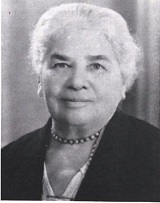 Lucy Edith Gullett (Dr.) IWD2025 Celebrations Lucy Edith Gullett (Dr.) 28 September 1876 - 12 November 1949
Lucy Edith Gullett (Dr.) IWD2025 Celebrations Lucy Edith Gullett (Dr.) 28 September 1876 - 12 November 1949Pittwater MP Jacqui Scruby will announce the Pittwater Woman of the Year at the Zonta International Women's Day Breakfast to be held at the Royal Prince Alfred Yacht Club this coming Thursday, March 6.
International Women's Day (March 8) is a global day celebrating the social, economic, cultural, and political achievements of women. The day also marks a call to action for accelerating women's equality. The 2025 theme is 'Accelerate Action'.
At the current rate of progress, it will take until 2158, which is roughly five generations from now, to reach full gender parity, according to data from the World Economic Forum. Focusing on the need to Accelerate Action emphasises the importance of taking swift and decisive steps to achieve gender equality. It calls for increased momentum and urgency in addressing the systemic barriers and biases that women face, both in personal and professional spheres.
IWD has occurred for well over a century, with the first IWD gathering in 1911 supported by over a million people. Today, IWD belongs to all groups collectively everywhere. IWD is not country, group or organisation specific.
In the lead into the announcement of the 2025 Pittwater Woman of the Year, and next Saturday's IWD celebrations, one of our former Pittwater inspirational ladies who would certainly have warranted being a Pittwater woman of the Year, Dr. Lucy Gullett, who spent most of her life calling for gender equality.
While investigating Lucy a picture emerged of a Socialite who was also a socially conscious woman. Dr Gullett gave numerous Talks on various subjects, was a keen golfer and loved the outdoors, a bridge player, a frequenter of Race Days (horses), was very literate, a doctor of Medicine with a Major in Chemistry, an advocate for indigenous peoples health rights, but mostly a champion of women’s and children’s issues.
Lucy was a member of Sydney’s Feminist Club when ‘feminism’ was defined as ‘the Women’s Movement is no sex-limited thing, but a great human movement in which women are free to serve their day and generation in what ever direction their talents give them the opportunity, not apart from their men folk, but in conjunction with them'.
Maxwell Spencer Dupain took thousands of photographs during his life, ranging from landscapes, to portraits, natural and informal scenes of people, and still life to nudes and architecture, along with a vast body of works taken for commercial use – the State Library of NSW holds almost 54 thousand of his images; a testament not only to his appetite for work but also the longevity of his career.
However, the subject he took many photos of was Newport Beach where the Dupain family had a holiday home, and here all of the genres that featured in his work can be seen, along with Newport ‘happenings’ – such as the launch Aklavic that was driven ashore in October 1954 by 20 year old Robert Michael Brown, ‘fugitive’ – who was eventually caught on Bushrangers Hill - or the storm of May 1974 that demolished the 'ablutions' block on Newport beach.
.jpg?timestamp=1729824296548)
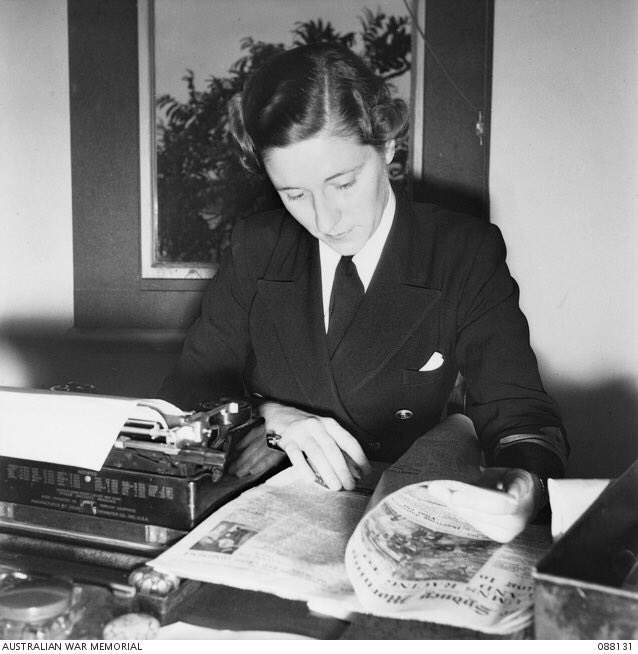
Informal portrait of Second Officer Margaret Collett Vaile of the Women’s Royal Australian Naval Service (WRANS), Press Censorship Liaison Officer, checking naval publicity at Naval Base Headquarters. This former Whale Beach jounralist was the founder of the Zonta Club for our area. Photo courtesy Australian War Museum.
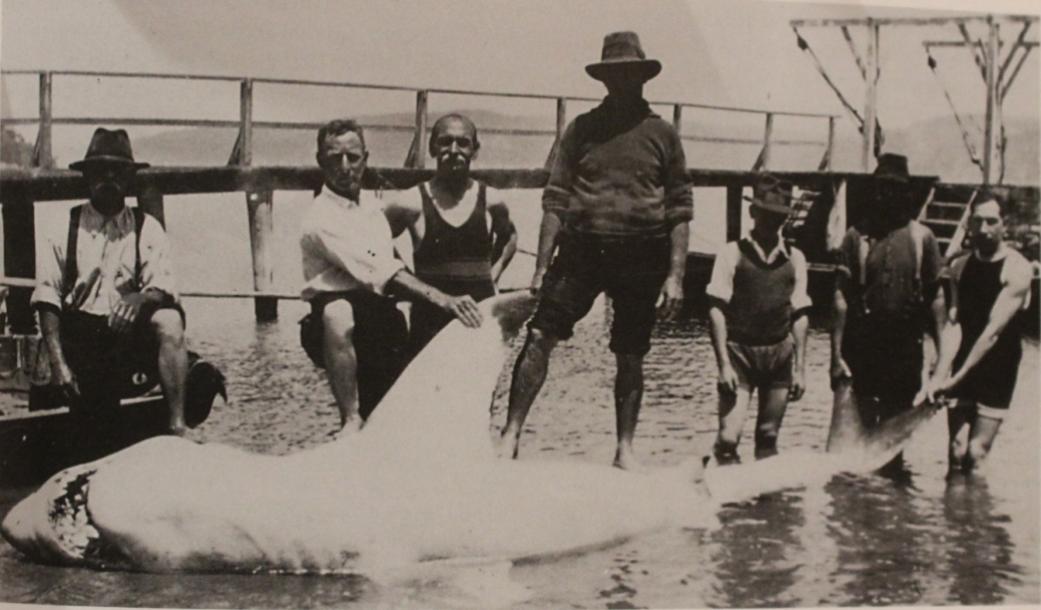
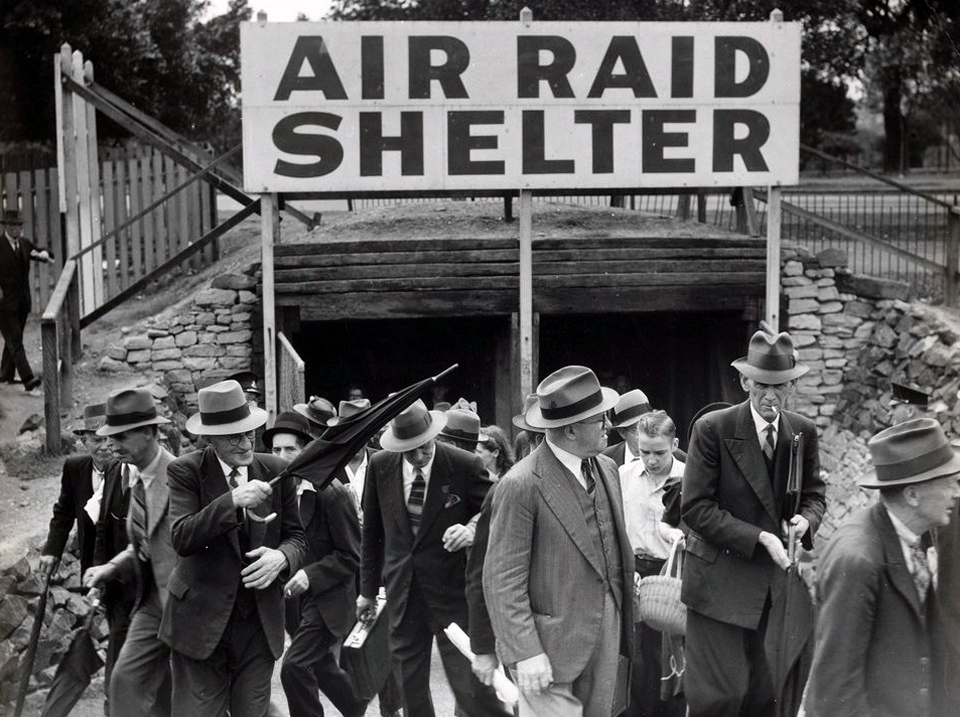
Crowds leaving a shelter in Hyde Park after the 'all clear' has been given c1942. Image courtesy of the State Library of Victoria [H99.201/3739](Argus Newspaper Collection of Photographs)
In April 1788 Australia's first Governor, Captain Arthur Phillip, led a reconnaissance party from Manly Cove seeking fertile land for growing crops. On this journey, he noted the tall trees which were to provide timber for the growing colony.
By December 8 1795 there was a prohibition on timber cutting on the banks of the Hawkesbury River, an Order that was issued by Captain John Hunter, RN, who took office as the second Governor of New South Wales on September 11, 1795.
By October 1803 the third Governor, Captain Philip Gidley King, RN, ordered settlers to desist and commence re-planting.
April
One resident who returned here to serve others in any capacity he could for all of his days and even after he passed away on October 29th, 1970, was Carl Gow of the Gow-Gonsalves boatshed at Palm Beach.
Carl was a founding member of the Palm Beach RSL Club, which held services at Whale Beach (dawn) and at the Palm Beach RSL cenotaph (11am) again this year.
Carl served at Gallipoli and in France during WWI, returning an honorary Captain to Palm Beach to set up a store with fellow veteran Reginald Augustus Howlett, as well as work as a fisherman, boat hire shed and would set out to rescue others from the Gow's - Gonsalves boatshed, still in existence just north of the Palm Beach ferry wharf. In fact, the first 'Palm Beach RSL' commenced in the Gow-Gonsalves shed itself.
Born Carl W J Beeston Gow at Newcastle in March 1889, the youngest son of Robert and Mary, his father was of the Pilot station at Newcastle. Carl was from a family whose contributions to saving lives in Australia, either as engineers on vessels, as Pilot Station attendees, as Lightkeepers at NSW Lighthouses, and as men who went out in their vessels to save others, could fill volumes.
Palm Beach is still littered with traces of Carl; the first Palm Beach Lands Company jetty became Gow’s wharf and the boatshed, now of the Gonsalves family, remains a thriving business, Gow’s, his elder brother David Robert William and his father Robert, worked as a relieving and second lighthouse keeper at Barrenjoey Lighthouse from 1912 to 1919. While the ship’s wheel from the Helen B Stirling, once in the foyer of Club Palm Beach (Palm Beach RSL), was a gift from Carl Gow.
Mr. Gow was also among the Palm Beach residents who worked to establish the Palm Beach War Memorial Kindergarten.
This Issue a few insights into a true Palm Beach gentleman.
May
These middens would become the subject of a money-making venture for early settlers and those transported as convicts to Australia, and would form a vital part of making the cement to construct some of Sydney's earliest buildings.
However, this was not the only early venture as here a salt-making venture was carried out, directly opposite Salt Pan Cove at Newport, and here too, ship building took place, again on the north facing end of the island, the last known one to be built and launched from here being the Geordy and from the current site of the Tennis Wharf.
Pittwater Council heritage records state some remnants of an early stone wharf at this location form part of the current Tennis Court Wharf.
These industries can be directly attributed to the man who was granted the island by the colonising UK Government, and who had been transported here as a convict himself - Andrew Thompson.
With today's Scotland Islanders continuing the modern tradition of a creative industry based in the people and the place itself, which stretches back decades in all forms of the Arts; Literature, Painting, Music, Theatre, and the newest offering, 'Wedding Island', debuting next weekend May 9-10, and two last shows of May 16 and 17, a resharing of an old history insight from the first round of Pittwater Patriarchs, led out by Bungaree and followed by Andrew Thompson, of Scotland Island.
Baptised on 7 February 1773 at Kirk Yetholm, a village in the Scottish Borders region of Scotland, 13 km south east of Kelso and less than 1 mile (1.6 km) west of the border, and 4 kilometres from Thompsons Walls, Andrew Thompson was the youngest and sixth child of John Thompson, a weaver, manufacturer and dyer, and his wife Agnes, née Hilson.
Independent MP's Jacqui Scruby (Pittwater), Michael Regan (Wakehurst) and Alex Greenwich (Sydney) visited the proposed site of the Great Koala National Park in the last week of April. Jacqui Scruby stated this past week:
''Pittwater once had koalas in our trees and we are heartbroken to see koala signs on our roads, knowing the local population is now extinct.''
''I’m calling on the NSW Government to urgently follow through on their election commitment to establish this park to protect not only our endangered koalas, but to also allow other threatened species like greater gliders and spotted-tailed quolls to thrive. The time is now, let's make it happen!''
Koalas lived throughout Pittwater for thousands of years until the early 1980's, from Palm Beach to Narrabeen and across the estuary, on the western shores.
In fact, over the last 100 years, habitat removal, dog attacks, roads and fences cutting through their ancient and traditional migratory paths, whether moving from one species of trees to another during the season to eat or to find a mate during breeding season, along with cars running them over, has killed every single former koala of Pittwater.
We have borne witness to this occurring, just as we have borne witness to the extinction of others.
This Issue run some of the records that have been made by John Illingsworth, or collected over the years, so that those who were not born when we were losing Pittwater's koalas, among other local extinctions, can see in the timeline what is lost when you do not stop - and then stop taking the wrong route to seek another way.
We hope a perusal of what went wrong may help us all get it right.
Bernard "Midget" Farrelly AM (13 September 1944 – 6 August 2016) was the first world surfing champion. Mr. Farrelly, was the first Australian to win a major surfing title, the 1963 Makaha International Surfing Championships, the unofficial world surfing championship of the day. In 1964 he won the inaugural World Surfing Championship at Manly Beach in Sydney.
He was also the first president, in 1961, of one of Australia's oldest continuous surfboard riders club, the Dee Why Surfing Fraternity. He presented a ten-part television series about surfing in Australia, The Midget Farrelly Surf Show, for the ABC. Midget was posthumously inducted as a Member of the Order of Australia in the 2017 Queen's Birthday Honours.
Palm Beach Whale Beach Association Secretary Robert Mackinnon's interview with Beverlie at the 2024-2025 AGM of the Association.
Seen through the eyes of Beverlie Farrelly, discover how different the Avalon Beach of the 1950s and 60s was from the one of today: life was simpler and moved at a slower pace as a community was formed in the wake of WWII.
As wife of the late Midget Farrelly, Beverlie shared insights into the remarkable life of this multi-faceted man who became Australia’s first international surfing champion.
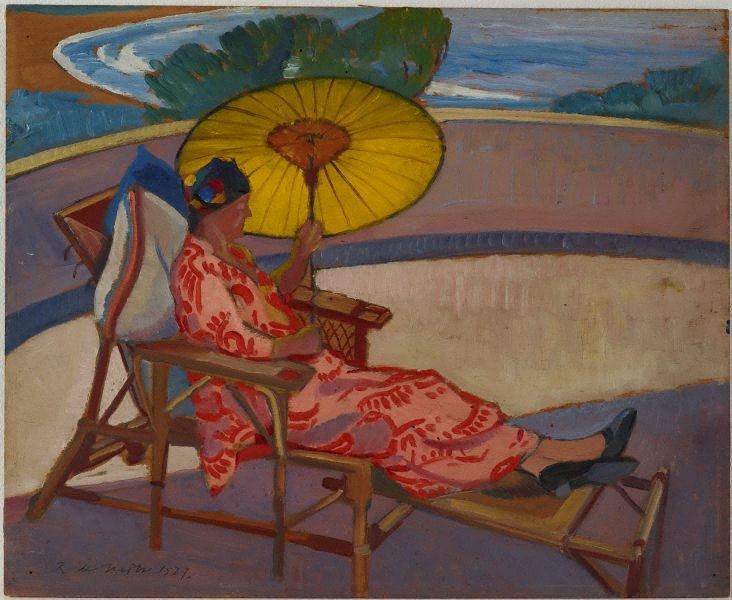
As any researcher of history will tell you, it’s always a ‘work in progress’, as there can be more to find and find out. And so states William Goddard (Bill) too, although he is happy for people to now know about the website wherein he is sharing history insights into different aspects of Pittwater, many of which have a connection to his own family.
The website is available at: goddardfamilytree.au
Bill has already shared some of his research, often working alongside Geoff Searl OAM, President of the Avalon Beach Historical Society, which will hold its next meeting on Tuesday June 10.
Bill's works and collaborative-works which have run in Pittwater Online News are:
- Bill Goddard shares Family Insights at Avalon Beach Historical Society's 2022 AGM
- MILTON FAMILY PROPERTY HISTORY – PALM BEACH by William (Bill) James Goddard II, Photos courtesy of the Milton Family
- Palm Beach Golf Course 1924 to 2024: some 100th year history celebratory insights - with AJG
- Sunrise Cottage, Palm Beach - with Geoff Searl OAM - et al
- The Palladium Palm Beach (1930 to 1974) - with Geoff Searl OAM, David Elfick - et al
Along with family history, his insights in the Careel Bay Dairy farms, James Booth or the Palm Beach Garage are always meticulously researched and updated when he finds some new detail. And there is a growing library of works to delve into.
The Goddards, alongside the Verrills, Gonsalves and Miltons, have been a part of the Barrenjoey peninsula for around 110 years - so it's wonderful they share family records, photos and recollections for all who want to know more about this place in its earlier days. This Issue some of his 2022 insights and family photos to whet your appetite.
June
A few weeks ago the news service was fortunate to run a few insights from Beverlie Farrelly on her husband Bernard, known as 'Midget', the first World Surfing Champion.
Beverlie shared that her first home in Pittwater was when her family lived in Avalon Camping Ground after Wold War Two.
This prompted a few inquiries from younger readers and new arrivals to Pittwater who were not be aware that the green area behind Avalon Beach dunes was once a vey popular camping ground from the late 1920's to 1930's on, until Warringah Shire Council closed it in 1953.
Although the closure in 1953 could be attributed to flooding that occurred in May that year, with two severe rain events within two days washing campers and their possessions along the Careel Creek into Careel Bay - and may wonder about the wisdom of allowing a camping area in what was known to be a flood zone to begin with - during the few decades it existed it provided not only a place to live for those impacted by the 1930's economic depression - when many took to canvas and caves to provide a roof for loved ones, and headed beachwards where they could fish for food - and persisted in post World War Two shortages - it also brought people to our area who stayed and not only went on to build community and serve in its volunteer organisations - such as the surf club - they helped establish the 'there's no them and us, it's just us and us looking after us' mien of the Barrenjoey community that persists today.
In the lead into VP Day 2025 we share a few local connections to the World War Two conflict in the Pacific that may not be well-known, commencing with the Workers' Educational Association 'Summer School' facility, which once stood on the corner of Wallamatta and Nullaburra roads at Newport, and was the venue for Women's Australian National Service (WANS), in particular the Sydney University Wans (known as "Swans") training, and by 1945 was the place for US and UK War Brides (BPF: British Pacific Fleet servicemen) who learnt skills which may make their new lives in their husband's countries easier.
Victory in the Pacific (VP) Day in 2025 will be commemorated on Friday, August 15th in 2025, and will be mark the 80th anniversary of Japan's surrender to the Allied forces in 1945. This day signifies the end of World War II in the Pacific and is a time for Australians to remember and honour the service and sacrifice of all those who served in this conflict, and particularly in the Pacific.
A combined Sub-Branches VP Day Commemoration Service will be held at the Avalon Beach RSL Cenotaph, commencing at 11.30am, led by Vice President Tamara Sloper-Harding, OAM, with the 2025 Guest Speaker being Commanding Officer HMAS Waterhen; Commander Lucy Frauenfelder, RAN.
In the Pacific theatre of World War II, Australia experienced significant casualties. The Australian War Memorial records at least 27,073 Australian soldiers were killed and 23,477 wounded from enemy action. Additionally, over 30,000 Australians were captured by the Japanese during the war, with a significant number dying in captivity.
On September 3rd, 1939, the day Great Britain declared war on Germany, Australia also declared war, announced by then Prime Minister Robert Menzies on national radio.
The conflict, which would continue for 6 years, saw Australia attacked for the first time, at Darwin, and through the mini-submarine attacks within Sydney Harbour and along the eastern seaboard, with one of these being found off Bungan Beach, now an official war grave.
When the Empire of Japan captured the British stronghold of Singapore between February 8 to 15 1942, imprisoning young men like Warriewood's Walter Williams and Palm Beach SLSC's Adrian Curlewis, by then Prime Minister John Curtin recalled many of the Australians serving in North Africa and the Europeans theatres of conflict.
Pittwater's Anthony Ruskin Rowe, a spitfire pilot and one of those recalled, lost his life on June 20th 1943 defending Darwin, while Narrabeen resident Lindsay Dufty served on the ground in the top end.
In Pittwater a submarine boom would be placed between Barrenjoey and the West Head headlands, anti-tank traps would rip up the countryside between Mona Vale, Bungan and Bayview, barbed wire would be placed along the beaches to thwart invasion and troops would be stationed at gun emplacements along the peninsula, while Coast Watchers, along with women who stayed would be part of the 'spotter' squads - stationing themselves along each headland - with the women taking on a roster of each staying atop the headlands twice each each week to look out for and report enemy ships, submarines and planes. Only one known fatality is recorded, at this stage, of those all-women 'spotter' squads, Palm Beach resident Ailsa Craig, by then the wife of Captain George Urquhart (Scotty) Allan.
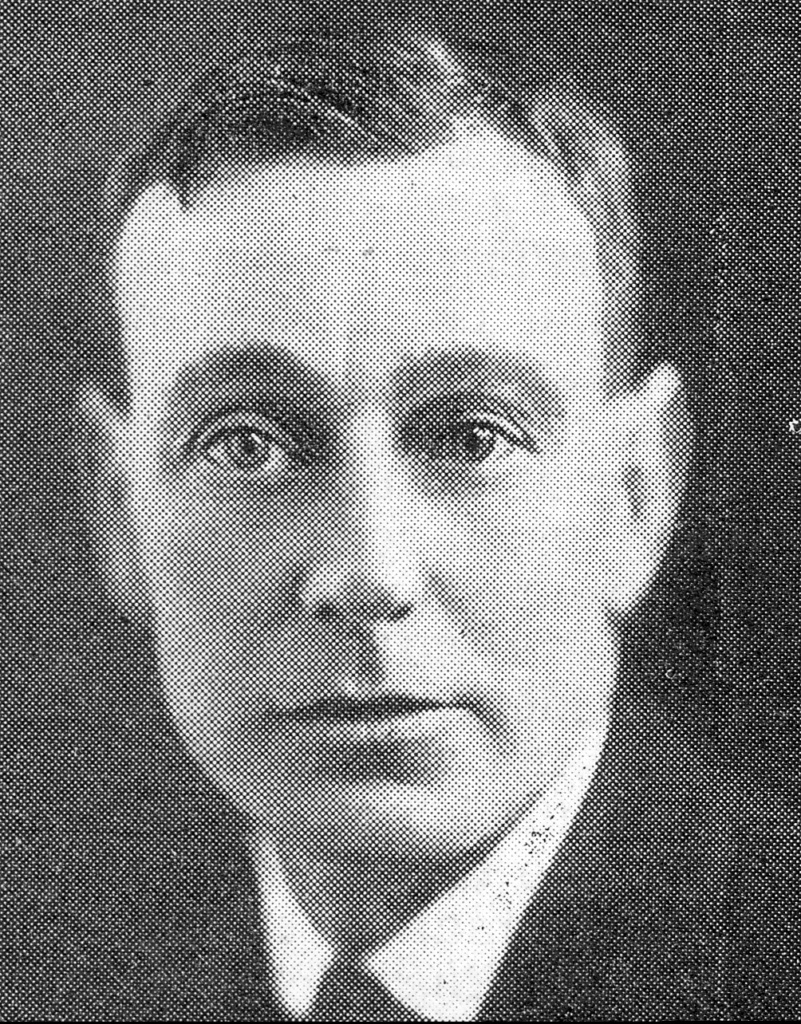
Palm Beach SLSC's Percy Hunter in 1906
The first wharf built at Church Point was the result of those living here in the 1880's calling for this facility to provide safe access for children to the school held during weekdays at the Chapel which gave Church Point its current name.
On June 1st 1883, the Mayor of St Leonards, the District where so many births in Pittwater are recorded during the 1800’s, prevailed on the then Colonial Secretary of the colony for a wharf. The response is recorded:
DEPUTATIONS. THE NARRABEEN-ROAD.
A deputation, consisting of the Mayor of St Leonards, Dr Tibbit's, and several other gentlemen, waited upon the Hon. Alexander Stuart, Colonial Secretary, yesterday, to request that the Narrabeen-road from Manly to Pittwater be put in a proper state of repair, and that a jetty be constructed on Church Point at Bayview, Newport. The road, it was represented, is now in a very bad condition, and if it were put into proper order it would open up one of the most beautiful districts in the colony. The jetty was required for the benefit of children going to school and persons attending church. The deputation also asked for a bathing place... DEPUTATIONS. THE NARRABEEN-ROAD. (1883, June 2). The Sydney Morning Herald (NSW : 1842 - 1954), p. 9. Retrieved from http://nla.gov.au/nla.news-article13536041
Dr. Tibbits of Petersham, a medical practitioner, is the landholder of 40 acres, part of Portion 25 and formerly a section of the William Oliver and grant, on the west side of the ‘church acre’ on which the chapel has been built.
Over a year later a Tender was advertised and it was subsequently announced a person being accepted for the work, Newport's William Boulton. This Issue a few insights into the 140+ years of one of Pittwater's oldest wharves.
On 28 June, 1965, 2 teachers and 25 students walked up the hill from Avalon PS and into a new school, which today is the Heart of the Hill.
On Saturday 28 June, 2025 - 60 years to the day - around 200 Students, all the Teachers and Staff members, parents and families past, present and future, retraced their steps in an Anniversary Walk.
Four original students were present from the first intake; Ross Montague, John Gray, David Watson and Di Page.
No 60 Year BPPS Celebration would be complete without a delve into the history of the Bilgola Plateau Public Schools' beginnings.
This has been researched and written by Susan Peacock, who has an Archivist and working in Museums background and has been reading those 60 years of records, many of them still on paper - thank you Susan.
July
The State Library of New South Wales, in its ongoing digitisation of materials and making these available for the populace, has added photographs of a 'tropical fruit orchard at Pittwater' which, according to the sources, were taken on July 11th, 1938, possibly taken for Woman magazine or Woman: Incorporating the Woman's Budget - a woman's magazine published in Sydney, by Sungravure [Sun newspapers] from 1934 to 1954 with Issues originally cost three pence each.
Among these images of paw paws, bananas, strawberries, pineapples and more appear some 'models' and one of the farmer or caretaker with a tomato vine. The location of this 'farm' was on the Crescent at the Newport-Mona Vale verges, a nice suntrap at this time of the year and naturally given to promoting the growth of such fruits
August
 Broken Section: The Story Of Pittwater's Anti-Submarine Boom Net By John Illingsworth
Broken Section: The Story Of Pittwater's Anti-Submarine Boom Net By John IllingsworthPittwater RSL: new Developments
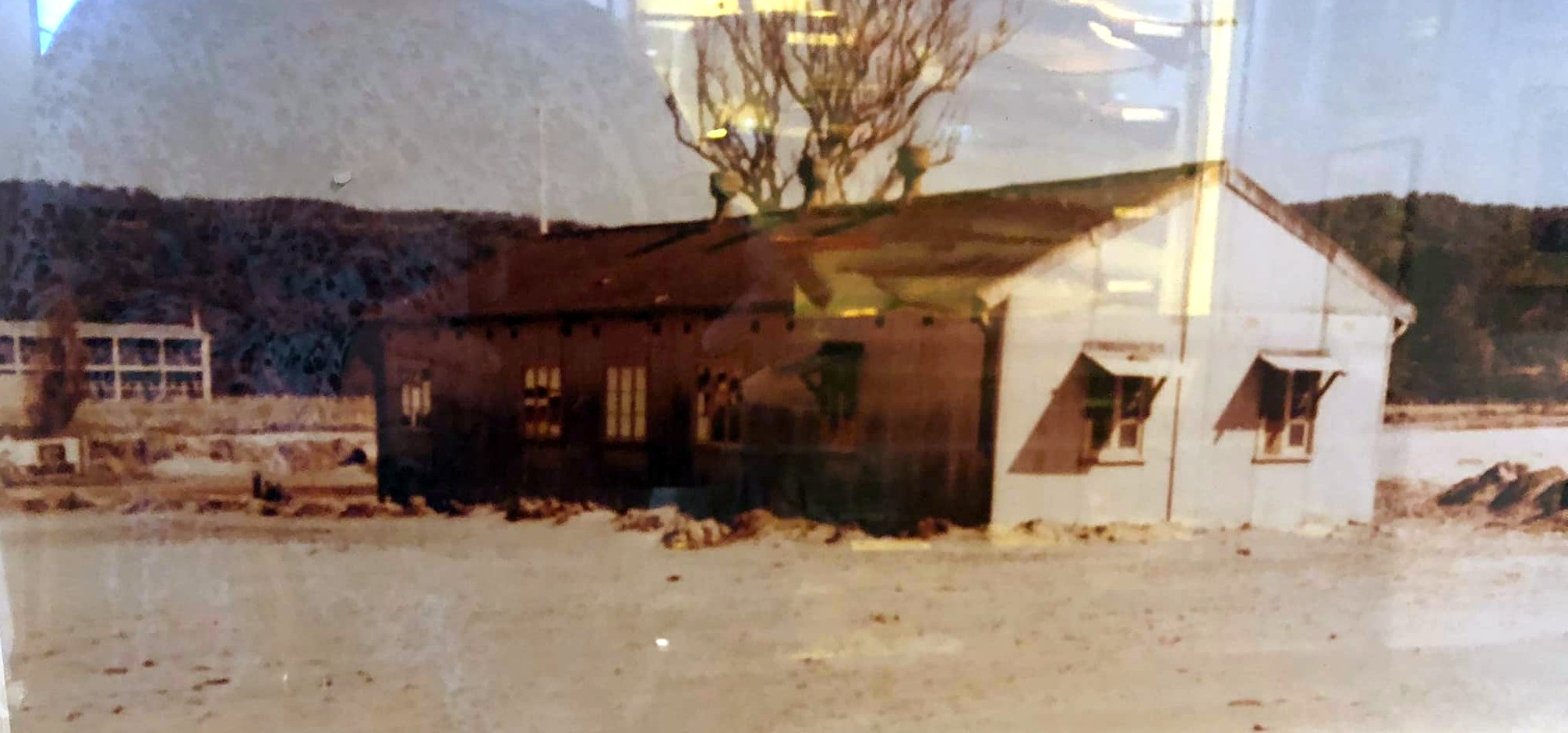
- Social gatherings
- Private events
- Corporate functions
- A new lower-level 5-star entry
- A portico for a grand arrival experience
- Accessible parking
- Deck and Club connectivity via the terrace
- New escalators and lifts
- Pittwater Rewards (Platinum members) parking with direct club access
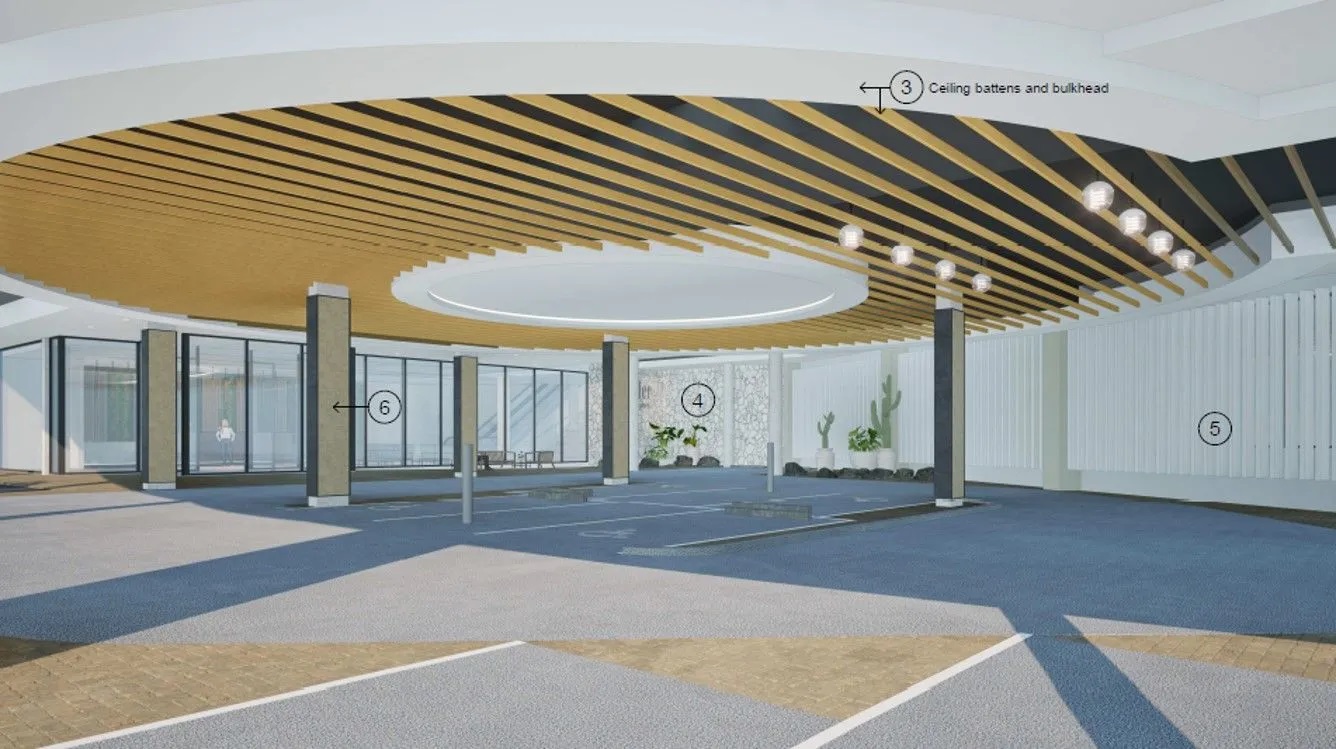
On November 21st 1944 Captain "Jimmy" Broadbent, of Point Piper, a famous Australian airman was piloting the plane which made a forced landing on Narrabeen Beach.
More details in: Landing in Pittwater: That Beach-Estuary-Lagoon looks like a great place to touchdown!
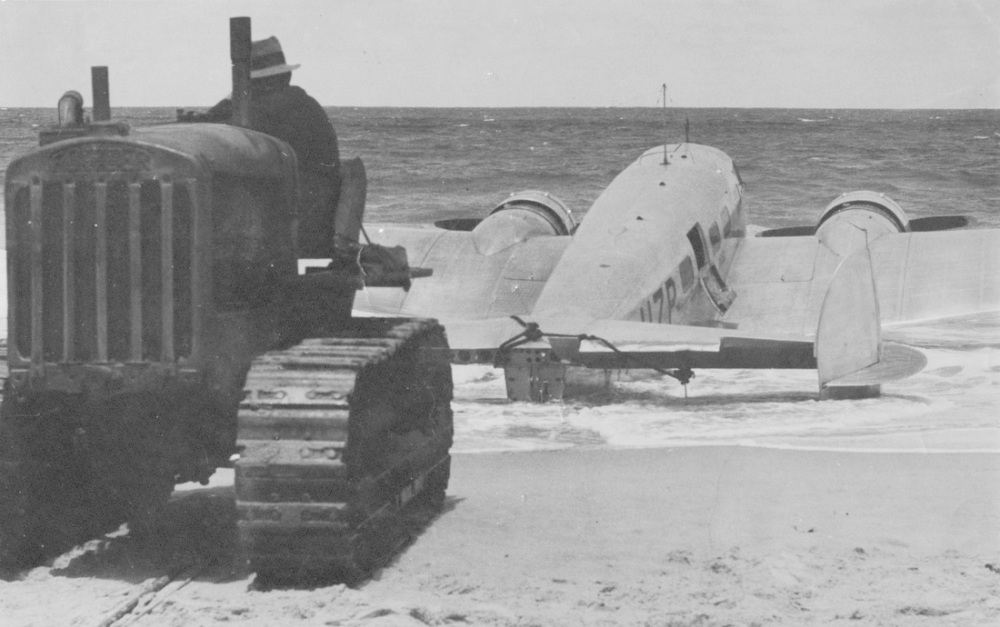
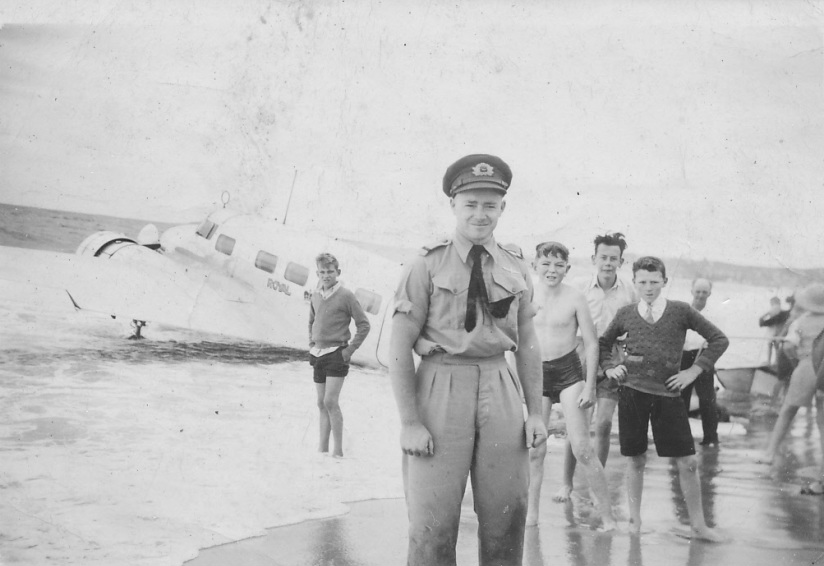
September
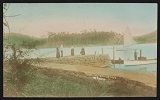 Lovett Bay Public Wharves: Some History - one to the west, one to the east, one from when the area was opening up for tourists, one from when we were finding the ide
Lovett Bay Public Wharves: Some History - one to the west, one to the east, one from when the area was opening up for tourists, one from when we were finding the ide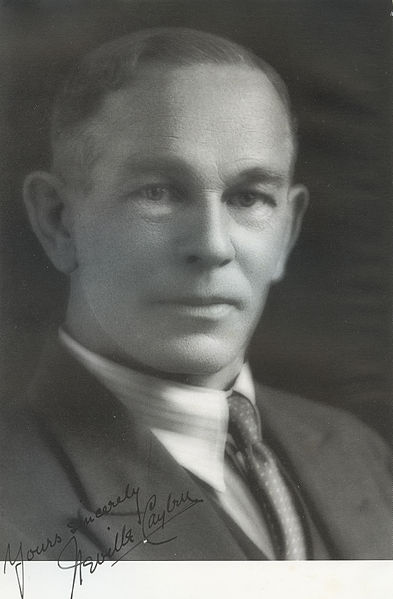
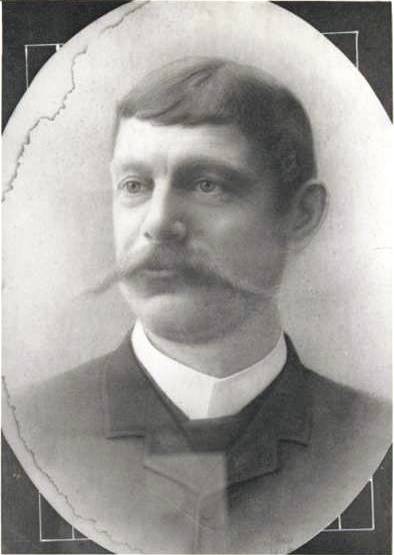
Neville William Cayley Neville Henry Peniston Cayley
 Retracing Governor Phillip's Footsteps around Pittwater: The Mystery of the Cove on the East Side by Roger Sayers OAM and Geoff Searl OAM
Retracing Governor Phillip's Footsteps around Pittwater: The Mystery of the Cove on the East Side by Roger Sayers OAM and Geoff Searl OAMOctober
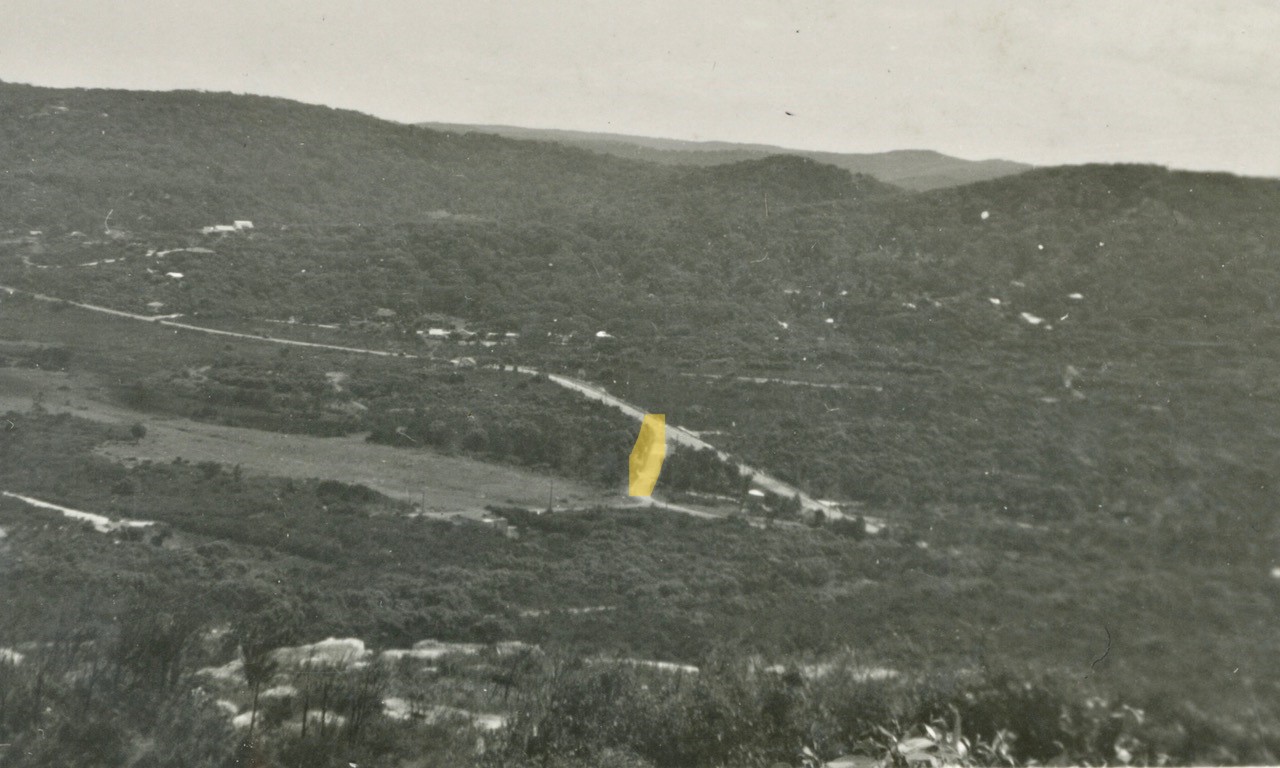

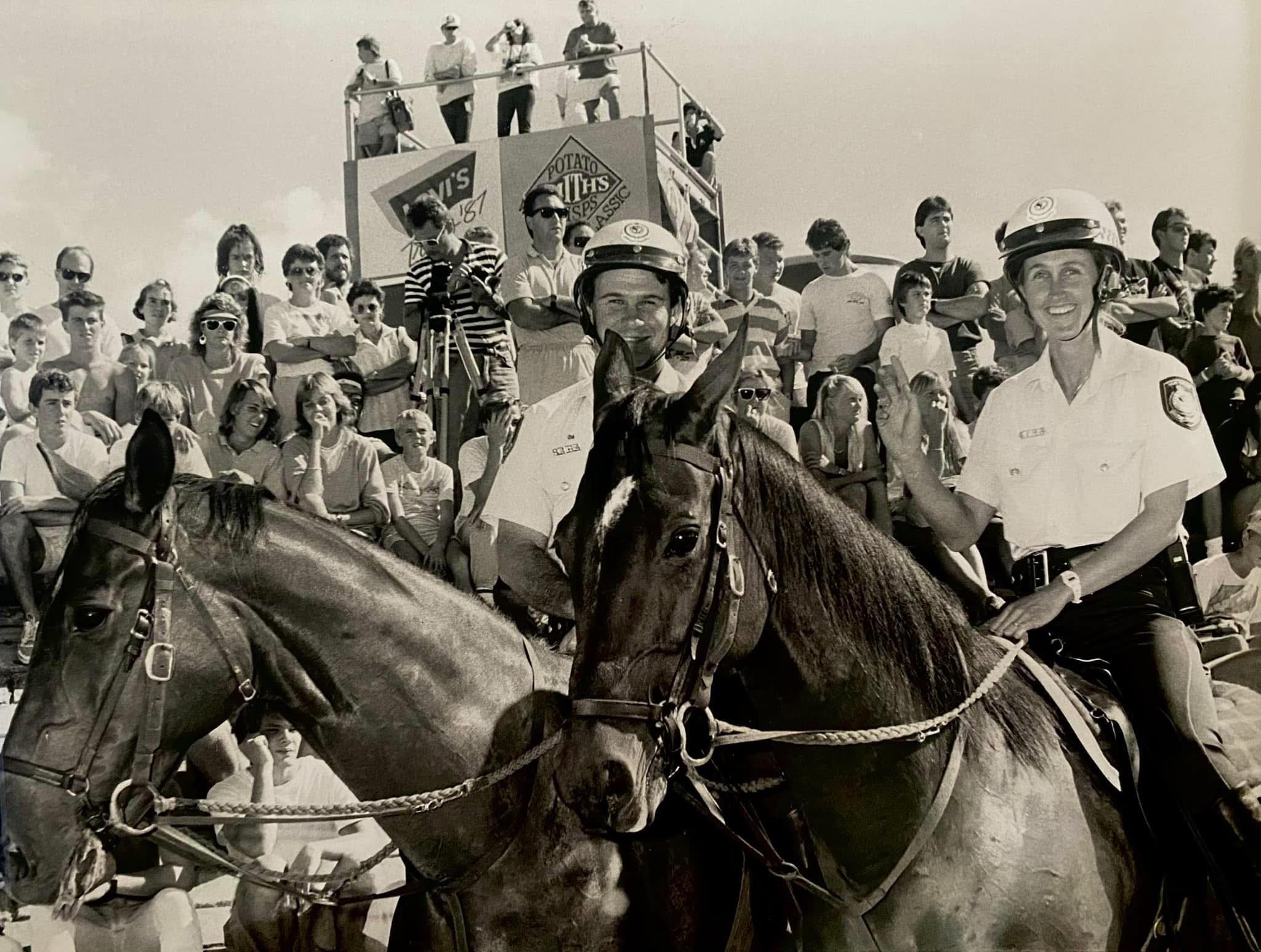
November
Wesley Taylor Narrabeen was Wesley Mission’s longest running aged care facility, opening its doors in 1929 as ‘The Outlook’, a home for aged men of 'reduced means', and expanding to become the WG Taylor Memorial Home in 1935.
It was named to honour the Rev. William George Taylor who became the first Superintendent of Wesley Mission in 1884, and who was stated to be an evangelist.
''Revival followed him wherever he went and ailing Methodist causes were renewed in spiritual power, as well as in numbers and financial security. Taylor was a man of vision with the executive and administrative ability to implement his ideals. Able to inspire extraordinary loyalty in others who willingly co-operated in his plans, he combined the traditional spiritual life of the Church with Christian humanitarianism.'' Don Wright states in his biography on the man.
Wesley homes for elderly people were primarily funded through donations from the congregations and the broader public. This enabled the Methodist Church to provide care for the elderly, especially those who were poor or disadvantaged.
The Wesley Methodists' came into possession of the site at Narrabeen after the premature death of then owner Lebbeus Hordern (31 May, 1891 to 10 September, 1928) after he took too much of a sleeping powder he had used to deal with ongoing insomnia.
Lebbeus was related to Alfred James Hordern (1859 -1932) of Kalua, Palm Beach.
When you live on an island maintaining 'access to' its land is vital - you need a bit of low tide beach, a slipway, a boat ramp, a landing place, a jetty or wharf.
There are around 220 years between when Andrew Thompson used the north end of the island and current day site of Tennis Court Wharf as a place for salt pans and where the schooner Geordy was launched while another, in 1810, was 'in stocks', the 1884 application by former Mariners Joseph Benns and Charles Jenkins to 'Maintain a Jetty' facing west near today's Cargo Wharf site - which means there was already something there to land items on the island or take produce of some sort off the island, 'shipping' it - the 1924 subdivision of large blocks into suburban-sized blocks which saw Bells and Eastern wharves being built 'to provide access', and when Carols' Wharf was finished in 1978, to provide that same equitable 'access to' for residents.In between circa 1804/05, when a Land Grant to Thompson and the Autumn of 1978, legislation defined Permissive Occupancies and then a Special Lease. A permissive occupancy is a type of tenure that was issued under former legislation; this type of tenure was subsequently replaced by licences. Under the Crown Land Management Act 2016, existing permissive occupancies are referred to as licences.
It's also a place where for thousands of years no wharf was required. The shells shipped to Sydney Town by the boatload to make mortar were from middens on the west and north side of the island, with a remnant still adjacent to today's Catherine Park, mark feast places of shellfish and caught fish by the original custodians of this place.
Compiled by Terry Cook, current President, with extracts from "A History 1975 - 2010" written by Greg Ennis and back-up research/+ 2011-2015 photos by A J Guesdon
Photos of 50th Celebration, AGM, and Christmas Toy Drop off Day November 15 2025 by Michael Mannington OAM of Community Photography, and Donna Cliff, Kimbriki Resources
The Rock pools that form a feature at the southern ends of Pittwater beaches remain one of the most popular places to meet up with friends and enjoy a dip or do laps. These are places our children learn to swim, places we can sit and relax, and places where those young and not so young anymore maintain fitness and good health all year round.
This week a dive into some of the best places to cool off as the Season heats up and their many changes.
December
Dearin Reserve, on Heron Cove at Newport, with Haystack Point to the north, Newport Public wharf, Newport Hotel and Old Mangrove Bay to the south, is another area on the Pittwater estuary that was resumed to provide ‘access’ to that waterbody for residents and visitors and that residents have stood up for over the years.
Dearin Park has been stated to be named after Mr. and Mrs. Dearin who lived at the bottom of Gladstone street and gave the land to the council for the residents use as a reserve. Although this has become a popular local anecdote, the land was actually resumed from Mr. Dearin and two others in the 1920's. The name was given to honour his looking after the reserve, even after that resumption in what reads as a touch of lording over a resident and bullying by the then council.
Records indicate his home was at end of Gladstone and on Princes street – at the waterfront end of Lot 7, Section A Town of Newport.
This is also where, at least three times, residents have stood up to defend the Pittwater foreshores and this reserve in particular from developmental impacts that would destroy its environment and all that lives there because that had been retained.
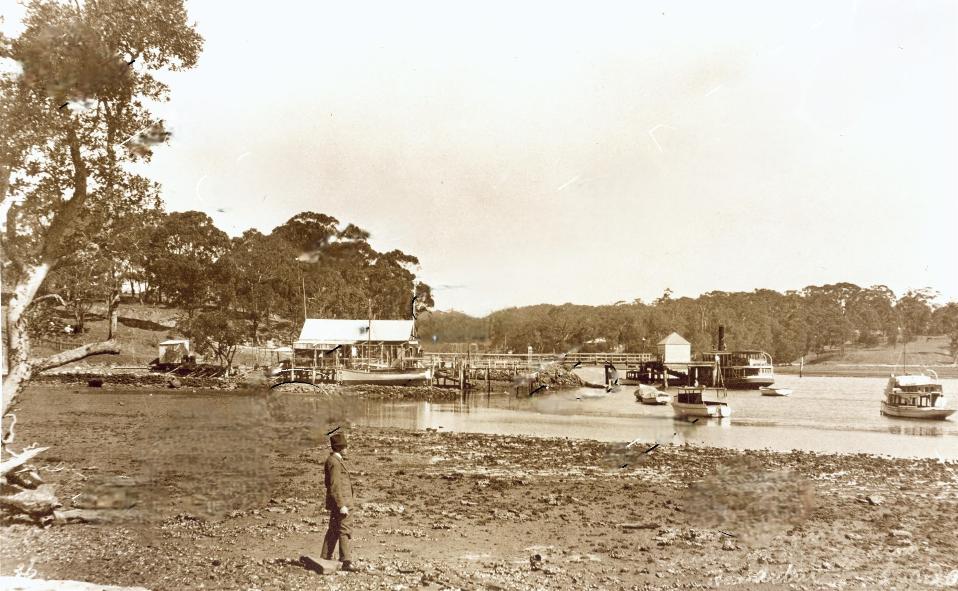
Previous History Pages:
Marie Byles Lucy Gullett Kookoomgiligai Frank Hurley Archpriest JJ Therry Sir Patrick Gordon Taylor Bowen Bungaree W. Bradley 1788 Journal Midholme Loggan Rock Cabin La Corniche La Corniche II Lion Island Bungan Beach Botham Beach Scarred Trees Castles in the Sand Dame Nellie Melba lunches at Bilgola Spring, 1914 First to Fly in Australia at North Narrabeen Mona Vale Golf Club's Annual Balls Governor Phillip camps on Resolute Beach Ruth Bedford Jean Curlewis Mollie Horseman Charlotte Boutin May Moore Neville W Cayley Leon Houreux Frederick Wymark Sir Adrian Curlewis Bilgola Heron Cove Mullet Creek Shark Point Woodley's Cottage A Tent at The Basin Collin's Retreat-Bay View House-Scott's Hotel Bilgola Cottage and House The First Pittwater Regatta Women Cricketers Picnic Filmed In Pittwater Governor Phillip's Barrenjoey Cairn Waradiel Season The Church at Church Point Governor Phillip's Exploration of Broken Bay, 2 - 9 March 1788 Petroglyths: Aboriginal Rock Art on the Northern Beaches Avalon Headland Landmarks Steamers Part I Pittwater Aquatic Club Part I Woody Point Yacht Club Royal Motor Yacht Club Part I Dorothea Mackellar Elaine Haxton Neva Carr Glynn Margaret Mulvey Jean Mary Daly Walter Oswald Watt Wilfrid Kingsford Smith John William Cherry George Scotty Allan McCarrs Creek Narrabeen Creek Careel Creek Currawong Beach Creek Bushrangers at Pittwater Smuggling at Broken Bay An Illicit Still at McCarr's Creek The Murder of David Foley Mona Vale Outrages Avalon Camping Ground Bayview Koala Sanctuary Ingleside Powder Works Palm Beach Golf Course Avalon Sailing Club Mona Vale Surf Life Saving Club Palm Beach SLSC Part I - The Sheds Warriewood SLSC Whale Beach SLSC Flagstaff Hill Mount Loftus Pill Hill Sheep Station Hill S.S. Florrie S.S. Phoenix and General Gordon Paddlewheeler MV Reliance The Elvina Florida House Careel House Ocean House and Billabong Melrose-The Green Frog The Small Yacht Cruising Club of Pittwater Canoe and I Go With The Mosquito Fleet - 1896 Pittwater Regattas Part I - Dates and Flagships to 1950 Shark Incidents In Pittwater The Kalori Church Point Wharf Bayview Wharf Newport Wharf Palm Beach Jetty - Gow's Wharf Max Watt Sir Francis Anderson Mark Foy John Roche Albert Verrills Broken Bay Customs Station At Barrenjoey Broken Bay Water Police Broken Bay Marine Rescue - Volunteer Coastal Patrol Pittwater Fire-Boats Prospector Powder Hulk at Towler's Bay Naval Visits to Pittwater 1788-1952 Pittwater's Torpedo Wharf and Range Naval Sea Cadets in Pittwater S.S. Charlotte Fenwick S.S. Erringhi P.S. Namoi S.Y. Ena I, II and III Barrenjoey Headland - The Lessees Barrenjoey Lighthouse - The Construction Barrenjoey Broken Bay Shipwrecks Up To 1900 Barrenjoey Light Keepers Douglas Adrian Ross Newport SLSC 1909 - 1938 Part I Overview North Narrabeen SLSC - The Formative Years First Naval Exercises by New South Wales Colonial Ships –The Wolverene at Broken Bay Bilgola SLSC - the First 10 years North Palm Beach SLSC A History of Pittwater Parts 1 and 4 Pittwater Regattas - 1907 and 1908 Pittwater Regattas - 1921 - The Year that Opened and Closed with a Regatta on Pittwater Pittwater Regatta Banishes Depression - 1933 The 1937 Pittwater Regatta - A Fashionable Affair Careel Bay Jetty-Wharf-Boatshed Gow-Gonsalves Boatshed -Snapperman Beach Carl Gow’s WWI Service in AIF Camping at Narrabeen - A Trickle then a Flood Pittwater's Parallel Estuary - The Cowan 'Creek' RMYC Broken Bay Boathouse and Boatshed Barrenjoey Boat House The Bona - Classic Wooden Racing Yacht Mona Vale Hospital Golden Jubilee - A Few Insights on 50 Years as a Community Hospital Far West Children's Health Scheme - the Formation Years The First Scotland Island Cup, Trophy and Race and the Gentleman who loved Elvina Bay Royal Motor Yacht Club Broken Bay NSW - Cruiser Division History - A History of the oldest division in the Royal Motor Yacht Club Royal Motor Yacht Club Broken Bay Early Motor Boats and Yachts, their Builders and Ocean Races to Broken Bay, the Hawkesbury and Pittwater The Royal Easter Show Began As the Royal Agricultural Society of New South Wales The Mail Route to Pittwater and Beyond The Wild Coachmen of Pittwater - A Long and Sometimes Bumpy Ride on Tracks Instead of Roads The Fearless Men of Palm Beach SLSC's Surf Boats First Crews - A Tale of Viking Ships, Butcher Boats and Robert Gow's Tom Thumb 'Canoe' Furlough House Narrabeen - Restful Sea Breezes For Children and Their Mothers From Telegraphs to Telephones - For All Ships at Sea and Those On Land Mona Vale Training Grounds - From Lancers on Horses to Lasses on Transport Courses Fred Verrills; Builder of Bridges and Roads within Australia during WWII, Builder of Palm Beach Afterwards Communications with Pittwater Ferries To Pittwater A History of Pittwater - Part 4: West Head Fortress Pittwater's Lone Rangers - 120 Years of Ku-Ring-Gai Chase and the Men of Flowers Inspired by Eccleston Du Faur Early Pittwater Launches and Ferries Runs Avalon Beach SLSC - The First Clubhouse Avalon Beach SLSC The Second and Third Clubhouses From Beneath the Floorboards at Hyde Park Barracks Bungaree Was Flamboyant Andrew Thompson - 'Long Harry' Albert Thomas Black John Collins of Avalon Narrabeen Prawning Times - A Seasonal Tide of Returnings Oystering in the Pittwater Estuary - Oyster Kings and Pearl Kings and When Not to Harvest Oysters Yabbying In Warriewood Creeks Eeling in Warriewood's Creeks (Includes A Short History of community involvement in environmental issues/ campaigns in and around Narrabeen Lagoon - 1974 to present by David James OAM) Eunice Minnie Stelzer - Pittwater Matriarchs Maria Louisa Therry - Pittwater Matriarchs Manly's Stone Kangaroo, Camera Obscura, First Maze and 'Chute' - Fun Days in Sea Hazes from 1857 On A Salty Tale of the Kathleen Gillett – A Small Reminder and Celebration of Our 70th Sydney to Hobart Katherine Mary Roche - Pittwater Matriarch Sarah A. Biddy Lewis and Martha Catherine Benns Pittwater Matriarchs A Glimpse of the Hawkesbury.(1883) By Francis Myers. Illustrated by J C Hoyte Pittwater's New Cycle Track of 1901 Manly to Newport The Rock Lily Hotel Barrenjoey House The Pasadena Jonah's St Michael's Arch The First Royal Visitor to Australia: the Incident at Clontarf March 12th, 1868 Pittwater: Lovely Arm of the Hawkesbury By NOEL GRIFFITHS - includes RMYC Wharf and Clareville Wharf of 1938 + An Insight into Public Relations in Australia George Mulhall First Champion of Australia in Rowing - First Light-Keeper at Barranjuey Headland Captain Francis Hixson - Superintendent of Pilots, Lights, and Harbours and Father of the Naval Brigade The First Boat Builders of Pittwater I: the Short Life and Long Voyages of Scotland Island Schooner the Geordy The Marquise of Scotland Island Boat Builders of Pittwater II: from cargo schooners and coasters to sailing skiffs and motorised launches 130th Anniversary of Australia’s Sudan Contingent - Local Connections of the first Australians to Serve The Riddles of The Spit and Bayview/Church Point: sailors, boat makers, road pavers and winning rowers The Currawong: Classic Yacht VP Day Commemorative Service 2015 – at Avalon Beach RSL Cenotaph: 70th Anniversary Captain T. Watson and his Captain Cook Statues: A Tribute to Kindness Pittwater Reserves: The Green Ways; Hordern or Wiltshire Parks to McKay Reserve – From Beach to Estuary Pittwater Reserves, The Green Ways: Clareville Wharf and Taylor's Point Jetty Pittwater Reserves: The Green Ways Bilgola Beach - The Cabbage Tree Gardens and Camping Grounds - Includes Bilgola - The Story Of A Politician, A Pilot and An Epicure by Tony Dawson and Anne Spencer Pittwater Reserves - The Green Ways: Mona Vale's Village Greens a Map of the Historic Crown Lands Ethos Realised in The Village, Kitchener and Beeby Parks Pittwater Regatta Air Race Trophies: from 1934 and 1935 and The Pilot Who Saved William Hughes Pittwater Reserves: The Green Ways; Bungan Beach and Bungan Head Reserves: A Headland Garden Early Pittwater Paddlers, Oarsmen, Rowers and Scullers: The Green Family Elanora - Some Early Notes and Pictures The Stewart Towers On Barrenjoey Headland Early Pittwater Paddlers, Oarsmen, Rowers and Scullers: The Williams Family Early Cricket in Pittwater: A small Insight Into the Noble Game from 1880's On The Pacific Club's 2016 Carnival in Rio Fundraiser for Palm Beach SLSC Marks the 79th Year of Support Bert Payne Park, Newport: Named for A Man with Community Spirit Early Pittwater Paddlers, Oarsmen, Rowers and Scullers: The Fox Family Surf Carnivals in February 1909, 1919, 1925, a Fancy Dress Rise of Venus and Saving Lives with Surfboards Early Pittwater Paddlers, Oarsmen, Rowers and Scullers: The Paddon Family of Clareville Mermaid Basin, Mona Vale Beach: Inspired 1906 Poem by Viva Brock Early Pittwater Schools: The Barrenjoey School 1872 to 1894 The Royal Easter Show and 125th Celebration of the Hawkesbury Agricultural College: Farmers Feed Us! The Newport School 1888 to 2016 Pittwater's Ocean Beach Rock Pools: Southern Corners of Bliss - A History The Royal Botanical Garden Sydney Celebrates 200 Years in 2016 The Porter Family of Newport: Five Brother Soldiers Serve in WWI Church Point and Bayview: A Pittwater Public School Set on the Estuary The Basin, Pittwater: A Reprise: Historical Records and Pictures Lighthouse Cottages You Can Rent in NSW - Designed or Inspired by Colonial Architect James Barnet: Includes Historic 'Lit' Days records Bayview Days Ships Biscuits - the At Sea Necessity that Floated William Arnott’s Success Mona Vale Public School 1906 to 2012 St Johns Camden: 176th And 167th Anniversaries In June 2016 - Places To Visit Narrabeen Lagoon And Collaroy Beachfront: Storms And Flood Tides Of The Past Avalon Beach Public School - A History Muriel Knox Doherty Sir Herbert Henry Schlink Shopping And Shops In Manly: Sales Times From 1856 To 1950 For A Fishing Village Sir Edward John Lees Hallstrom Royal Prince Alfred Yacht Club's 150th Sailing Season Opening: A Few Notes Of Old A Few Glimpses Into Narrabeen's Past Beauties Dr. Isobel Ida Bennett AO Taronga Zoo 100th Birthday Parade: 1000 Reasons To Celebrate War Memorials: Manly, October 14, 1916 Avalon Beach Golf Links: Pittwater Fields of Dreams II War Memorials - Mona Vale, November 14, 1926 Annie Wyatt Reserve Palm Beach: Pittwater Fields of Dreams II Tumbledown Dick Hill Waratah Farm and Narrabeen Plums: Pittwater Fields of Dreams II Mark Twain, J.F. Archibald And Henry Lawson - Did They Go Fishing At Narrabeen In The Spring Of 1895?: Probably! Bayview Baths Centenary Celebration in November 2016 hosted by Bayview-Church Point Residents Association Dr. Jenny Rosen's Historical Timeline Palm Beach RSL - Club Palm Beach Celebrating 60 Years Early Years At Narrabeen: The Plane Sailing Day Of 1944 The Five Ways- Six ways Junction; Kamikaze Corner - Avalon Bilgola RPAYC Season on Pittwater and coming of Jubilees in Summer of 1938 Local Explorers’ Modern Day Discovery - Governor Phillip’s First Landing site, Campsite and contact with Local Aborigines in Pittwater: The Case for West Head Beach Rendezvous Tea Rooms Palm Beach: links with 1817 and 1917: Palm Beach Stores and Fishermen St Cloud's Jersey Stud: Elanora Heights: Pittwater Fields of Dreams Roderic Quinn's Poems And Prose For Manly, Beacon Hill, Dee Why And Narrabeen A Historic Catalogue And Record Of Pittwater Art I – Of Places, Peoples And The Development Of Australian Art And Artists: The Estuary Celebrating World Radio Day: The Bilgola Connection With The Beginnings Of Radio In Australia Emile Theodore Argles - champion of all Australians without a Voice - a very funny Satirist, Manly Poet and Pittwater Prose Writer and Litterateur Sydney Harbour Bridge Celebrates 85th Birthday: A Few Pittwater Connections Victor James Daley: A Manly Bard And Poet who also came to Pittwater and the Hawkesbury Let's Go Fly A Kite !: Palm Beach Whistling Kites Inspire sharing How to Make Standard, Box and Whistling Boy Kites - school holidays fun with a bit of Australian and Narrabeen history Clifton Gardens Mosman: An Eternal Green and Saltwater Space, and Of Many Captains Historic Catalogue And Record Of Pittwater Art I: Coastal Landscapes and Seascapes The Bayview Tea Gardens 1920 to 1923 When Run By Thomas Edward And Annie Newey (Nee Costello) An Australian and RPAYC Commodore Aboard an America's Cup Challenger of 1908 and 1914 Henry Lawson - A Manly Bard and Poet: on his 150th Birthday Historic Catalogue and Record of Pittwater Art I: Artists and Artists Colonies Opportunity To Visit Submarine War Grave Renews Memories Of 75 Years Ago Early Bayview - insights courtesy Don Taylor and Margaret Tink Retracing Governor Phillip's Footsteps Around Pittwater: The Mystery Of The Cove On The East Side Early Pittwater Surfers – Palm Beach I: John (Jack) Ralston and Nora McAuliffe Patrick Edward Quinn: A Manly Prose writer who gave us A Run To Pittwater (1889) and Songs for the Federation of Australia Avalon Beach North Headland Indian Face 'Falls': An Everchanging Coastline Nautical Treasure In Suburbia Pittwater: Where the Wild Flowers Are 1917 to 2017 Narani, Captain Cook Celebrations At MVPS And Elvina Bay Memories - 1970s Early Pittwater Surfers – Palm Beach I: Alrema Becke Queen of Palm Beach The Beachcombers Surfboard Riding Club: Palm Beach, NSW - 1959 to 1961 Year Dated Beer Bottles Found at Taylors Point Early Pittwater Surfers: Avalon Beach I - 1956: The Carnival That Introduced The Malibu Surfboard and Being Able To SurfAcross A Wave Face - Reg Wood Anecdotes Mona Vale SLSC To Be Completely Renewed + A Few Insights from the Pages of the Past The Firecracker That Closed Narrabeen Hotel By Ken Lloyd (Savalloyd) + Narrabeen Hotel Licence Transfer Trail Traces Of WWII Coast Watchers Found On Bangalley Headland - 1942 Early Warriewood SLSC insights per Norman Godden + Extras The Macphersons of Wharriewood and Narrabeen: the photo albums of William Joseph Macpherson Angophora Reserve Avalon 1938 Dedication Avalon Preservation Association History by Geoff Searl Pittwater Summer Houses: a 1916 Palm Beach Cottage and Palm Beach House Pittwater YHA: Some History WWI Historian Presents New Film On The Beersheba Charge At Avalon Beach Historical Society Meeting Newport's Bushlink 'From The Crown To The Sea' Paths: Celebrating Over 20 Years Of Community Volunteer Bushcare Results Pittwater Fishermen: The Sly Family Narrabeen Exploits and Manly Community Contributors: The First Surfboat at Manly Beach Women In The Surf Life Saving Movement As Life Savers: From At Least 1910 Locally - Awarded Medals For Saving Lives From 1880 In NSW Windsor Bridge: Planned Destruction Of Historic Link With A Pittwater Connection The Rise Of The Cruising Season: A Look At Some Early Australian sailers and Local Visitor Beauties Pittwater Fishermen: Barranjoey Days Polo By The Sea 2018: Over A Hundred Years Of Loving This Game In Pittwater Australia Day Regatta Began As Anniversary Day Regatta Black Bakelite Telephone: Early Pittwater Phone Numbers Hy-Brasil, Avalon Beach - Pittwater Summer Houses Ferry Names for Emerald Class: The Gibbs-Turner Original Magic Button Pittwater Summer Houses: A Tent At Palm Beach's Governor Phillip Park 'Neath Barrenjoey Pittwater Summer Houses: The Cabin, Palm Beach - The Pink House Of The Craig Family Manly's Early Sand Sculptors: How Pennies Can Become Pounds and Found A New Art Retracing Governor Phillip's Footsteps Around Pittwater: The Mystery Of The Cove On The East Side by Geoff Searl and Roger Sayers 230th Anniversary Edit March 2018 Black-Necked Stork, Mycteria Australis, Once Visited Pittwater: Pair Shot in 1855 Butter Churns: Pittwater Dairies The Drainage System In Thompson Square, Windsor Sydney Royal Easter Show 2018 Show Stopper Beer Brewed By Modus Operandi Mona Vale Extends Locals Input Into RAS Annual Celebration Of Local Products Sydney's Royal Easter Show Showbag Began As An Australian Sample Bag Pittwater Fishermen: Great Mackerel, Little Mackerel (Wilson's Beach - Currawong) and The Basin Motor Car Tours To And In Pittwater Show Us The Way This Place Once Was Some Bayview Memories: The Lloyd Family Tarramatta Park, Mona Vale 1904 The Collaroy Paddle Steamer: New Ephemera Added To Public Accessible Records - Her Connections To Pittwater The Roads And Tracks Of Yesterday: How The Avalon Beach Subdivisions Changed The Green Valley Tracks Australian Sailing's Barranjoey Pin Program; some insights into this Pittwater Yacht and owner, Sir W Northam who won Australia’s first Olympic sailing gold medal at the 1964 Tokyo Olympic Games Avalon Beach Historical Society’s 9th Great Historic Photographic Exhibition: Thousands Of Stories Made Accessible The Hawkesbury River Railway Bridge: Timely Winter Anniversaries and Commemorations For A Septuagenarian and her Predecessor Photographers Of Pittwater Capture Historic Insights: A. J. (Arthur James) Vogan, 1859-1948 Roads To Pittwater: The Wakehurst Parkway Along Old Oxford Falls Track Roads To Pittwater: The Pittwater Road My Holiday by Charles de Boos – 1861 Shark-proof pools at Manly on the Harbourside Dad's Fishing Shack At Long Reef Historic Photographers Of Pittwater: Harold 'Caz' Cazneaux 1878 - 1953 Roads To Pittwater: The Mona Vale Road My Singing Story Barrenjoey High School's 50th Year: History Notes + The Original Barrenjoey School A Bunch Of Wildflowers: Historical Spring September Songs Camden-Campbelltown Hospitals & Carrington Convalescent Hospital: A Mona Vale-Frenchs' Forest Hospitals Comparison With Pittwater History Links The Newport School: 1888 to 2018 A Visit to Bungan Castle by ABHS Roads In Pittwater: The Barrenjoey Road Remembrance Day 2018 - Pittwater Veterans WWI 100 Years From Armistice Day 1918 Filmed in Pittwater: A Sentimental Reprise + Narrabeen Roads In Pittwater: The Bay View Road The NSW Women's Legal Status Bill 1918: How The 'Petticoat Interference In Government' Came Of Age - A 100 Years Celebration Of Women Alike Our Own Maybanke Selfe-Wolstenholme-Anderson Scott Brewster Dillon: A Tribute - He Did It His Way Pittwater Summer Houses: Rocky Point and Elvina Bay - A Place Of Holiday Songs and Operas In Ventnor, Fairhaven, Trincomalee and Maritana Remains Of Captain Matthew Flinders Discovered: Links with Bungaree of Broken Bay Isabella Jessie Wye MBE OAM (Isa) Off To School In 2019 Quicker Than 104 Years Ago Photographers Of Early Pittwater: Charles Bayliss Harold Nossiter's Classic Yachts Pittwater Roads II: Where the Streets Have Your name - Scotland Island Art Deco Inspirations In Palm Beach: The Palladium Dance-Hall, Cafe And Shop - The Surf Pavilion - The Beacon Store Pittwater Roads II: Where the Streets Have Your Name - Newport Beach Professor Christopher John Brennan: A Poet Of Newport Beach M.V. Reliance Turns 100 Avalon Beach Historical Society March 2019 Meeting: Focus On Trappers Way Pittwater Roads II: Where the Streets Have Your name - Clareville Photographers of Early Pittwater: Henry King Photographers Of Early Pittwater: David 'Rex' Hazlewood Richard Hayes Harnett - First Commodore Of The Royal Prince Alfred Yacht Club and Designer Of The Yacht 'Australian' - Based On The Lines Of A Mackerel Pittwater Summer Houses: Waiwera and Hopton Lodge, Bayview The Sirius Circumnavigation (1935-1937): Nossiter Trio Make Australian Sailing History Pittwater Roads II: Where the Streets Have Your name - Avalon Beach Were Manly's Statues, Smashed For Road Ballast, Sculpted By Achille Simonetti? Pittwater Roads II: Where the Streets Have Your name - Warriewood Avalon Beach Historical Society June 2019 Meeting Flint and Steel Guesthouse Pittwater Roads II: Where The Streets Have Your Name - 'Green Hills', Elanora Heights, and Ingleside Ethel Turner's Seven Little Australians Added To UNESCO Memory Of The World Register - The Missing Pages Restored RPAYC To Host 100th Year Of The Scandinavian Gold Cup and 5.5m Worlds In January 2020 - some Etchells Worlds and Gold Cup on Pittwater History Pittwater Roads II - Where the Streets Have Your Name: Mona Vale Pittwater Roads II - Where the Streets Have Your Name - Bungan Shark Meshing 2018/19 Performance Report + Historical Pittwater Shark Notes Anthony Thomas Ruskin Rowe, Spitfire Pilot (1919 To 1943) - Who Defended Darwin And His Mate: An Avalon Beach And Pittwater Hero Newport Surf Club Celebrates 110 Years On October 19, 2019 - A Few Club Firsts Pittwater Roads II - Where the Streets Have Your Name - Bilgola Tram Memorabilia - Historic Daylight Run For Sydney Light Rail Begins 80 Years After Last Tram To Narrabeen Closed Historic Insights From The Australian National Maritime Museums 1890 Pitt Water 'Era' Yacht Collection: The Basin Regattas Pittwater Roads II - Where the Streets Have Your Name - Coaster's Retreat and The Basin Samuel Wood Postcards of Pittwater and Manly Bilgola SLSC Celebrates 70 Years: Anecdotes from Early Members Pittwater Roads II - Where the Streets Have Your Name - Great Mackerel Beach G . E. Archer Russell (1881-1960) and His Passion For Avifauna From Narrabeen To Newport A History Of The Campaign For Preservation Of The Warriewood Escarpment by Angus Gordon and David Palmer Mark Foy of Bayview 2019 Inductee into Australian Sailing Hall of Fame The Victa Lawnmowers Story With A Careel Bay Link Plaque Unveiled To Mark Phenomenal Surfing Revolution Commencement: the 1956 Carnival at Avalon Beach That Introduced The Malibu Surfboard The Other Angels From Avalon: 50th Anniversary Of The IRB Marks The Saving Of Over 100 Thousand Lives The Eos: Classic Pittwater Yachts Pittwater Roads II: Where The Streets Have Your Name - Whale Beach Palm Beach Pavilion To Be Renamed The Lieutenant Colonel Douglas Marks DSO, MC Pavilion - some historical insights Daniel Gordon Soutar's Influence On Local Golf Courses: Some History Notes Pittwater Fire Boats History: January 2020 Tribute Palm Beach Pavilion Renaming Dedication Honours Lieutenant Colonel Douglas Marks DSO, MC Ella McFadyen's Love Of Pittwater: An Environment, Wildlife and Children's Champion Ella McFadyen's Love Of Pittwater: A Children's Champion - shorter version for Children Sydney Bus Museum Volunteers Helps Mona Vale Bus Depot Celebrate 50th Anniversary Of Opening Dorothy Hawkins - a new film by John Illingsworth Dorothy Hawkins' family, father Joseph Homer, ran a dairy near Winnererremy Bay at Mona Vale from 1936 Narrabeen Fire Brigade Celebrates 100th Anniversary + A Few Extra Insights Into Local Fires And Brigade Formations Pittwater, Narrabeen Lagoon & The Collaroy Beachfront: Some Storms and Flood Tides Of The Past - With Pictures The Wolverene At Broken Bay In 1885 Jack 'Bluey' Mercer (January 2nd, 1923 - February 17th, 2020) - West Head Battery in WWII Manly Children's Festival Federation Of A Commonwealth Medals Of 1901 Maybanke Selfe-Wolstenholme-Anderson: 2020 International Womens Day + Pittwater Online 10 Years Celebrations The Bona - Classic Wooden Yacht 2020 Answers North Head Quarantine Station, Manly: Some History - Governor Ralph Darling Saved Australians, Saved Australia Winnererremy Bay: Angus Gordon, the Sequel to Dorothy Hawkins by John Illingsworth Roderic Quinns Poems and Prose For Manly, Beacon Hill, Dee Why And Narrabeen - 10 Year Celebrations and all Manly-Pittwater Poets Series in One Place Stargazing In Pittwater: Historic and Contemporary The Naval Pioneers of Australia by Louis Becke and Walter Jeffrey 1899 Harold Tristram Squire: October 28, 1868 - May 16,1938; Artist of Mona Vale All Is Quiet On The Western Front by Roger Sayers Pittwater Roads II: Where The Streets Have Your Name - Palm Beach Large Sunfish Caught at Barranjuee in 1875 Grace Brook, 1921-2017 by Paul McGrath and Robin Bayes The Pittwater Floating Hotels That Almost Were: Old Paddle Steamers, Fairmiles + A Current 'Lilypad' Pittwater's Ocean Beach Rock Pools: Southern Corners Of Bliss - A History: Updated 2020 Long Reef Aquatic Reserve Celebrates 40th Anniversary Pittwater Roads II: Where The Streets Have Your Name - Careel Bay Careel Bay Reserves and Playing Fields in Careel Bay Playing Fields Reserve - Including Hitchcock Park: Birds, Boots & Beauty North Narrabeen Rock Pool: Some History Narrabeen Lakes Amateur Swimming Club by Maureen Rutlidge, Life Member Avalon Beach North Headland: An Ever-Changing Coastline - Storm Swell Of July 2020 Anthony Thomas Ruskin Rowe, Spitfire Pilot (1919 To 1943) - 75th VP Day Tributes 2020 Walter ('Wal') Williams - VP Day 75th Tributes 2020 Gwenyth Sneesby (nee Forster) 75th VP Day Tributes 2020 Pittwater's Midget Submarine M24 War Grave Renews Memories Of 75 Years Ago Avalon Beach and Surrounds in 1968 and 1970 - Photos Taken By Gary Clist Muriel Knox Doherty of Avalon Beach VP Day 2020 75th Anniversary Tributes Dundundra Falls Reserve: August 2020 photos by Selena Griffith - Listed in 1935 Binishells In Pittwater Schools Bairne Walking Track, Ku-Ring-Gai Chase National Park (Trig Stations) photos by Kevin Murray Pittwater Roads II: Where the Streets Have Your Name - Bayview Perons' Tree Frog At Careel Bay - who is 'Peron'? Pittwater Roads II: Where The Streets Have Your Name - Church Point Stapleton Park Reserve In Spring 2020: An Urban Ark Of Plants Found Nowhere Else Sydney's ACA Building Revitalisation Project Complete: Grand Old Building Has Links To Architects Of St. Patrick's College Manly - Some History Notes Harry Wolstenholme (June 21, 1868 - October 14, 1930) Ornithologist Of Palm Beach, Bird Man Of Wahroonga Three Ferries Named Narrabeen (1883 To 1984) + One Named Barranjoey (1913-1985) Rockley was Cricket for Girls 130 Years Ago - and this Team Visited Narrabeen as well The Bus To Palm Beach: Some History Surf Boats Season Kicks Off At Newport November 14; A Whole Range Of Local Sydney Northern Beaches Branch Carnivals Set To Roll Out Over The 2020-2021 Season + Some History Newport to Bilgola Bushlink 'From The Crown To The Sea' Paths: Founded In 1956 - A Tip and Quarry Becomes Green Space For People and Wildlife Welcome To Country: Neil Evers – NAIDOC Week 2020 Marine Rescue Broken Bay Naming Ceremony for the new BB30 - The Michael Seale Marine Rescue Broken Bay Unit's Beginnings In The Volunteer Coastal Patrol: Some RMYC BB Connections Stokes Point To Taylor's Point: An Ideal Picnic, Camping & Bathing Place Boy Scouts - The Pre-Nippers Life Savers: Some Notes On Local Troops From 1909 Pittwater Roads II: Where the Streets Have Your Name - Narrabeen Warriewood Historic Farmhouse 'Oaklands' by Krisitin Zindel John Illingsworth's Local History; 'The Water Dwellers' 1967, Enemark panoramas of Palm and Whale Beach 1917, 'Paper Run' 1956, John Illingsworth 1921 - 2012: 'A Newport Story Pittwater Summer Houses: 'Cooinoo', Bungan Beach Narrabeen Lagoon Catchment: Worth Looking After Past Notes and Current Photos Pittwater Summer Houses: Ocean Beach House - The Combers, Newport Beach Pittwater Aviatrixes On The Eve Of The RAAF's 100th: A NSW Women's Week - Women Of Aviation Week Celebration Florence Mary Taylor Doreen Mavis 'Bobby' Squire 2021 Tribute Avalon Beach Reserve Heritage Marker For Old Kiosk Installed Landing In Pittwater: That Beach-Estuary-Lagoon Looks Like A Great Place To Touchdown! Hawkesbury River: 1 In 100 Years Floods - What Washed Up On Pittwater Beaches The Australian Air League Camps At Mona Vale Beach In The Old La Corniche Building + The Robey Family Of Manly; 'Always Looking Out For Younger People' The Story Of Pittwater's Anti-Submarine Boom Net by John Illingsworth, Pittwater Pathways Avalon's Village Green: Avalon Park Becomes Dunbar Park - Some History + Toongari Reserve and Catalpa Reserve Unseen Footage Of Nellie Melba To Celebrate Her 160th Birthday: The Day Dame Nellie Melba Lunched At Bilgola Cottage Narrabeen Cenotaph + RSL History: 100 and 65 Years Markers Of Service In 2021 Avalon Beach Public School: Some History For A 70th Birthday Bungan Head 'Bridge' and Tank Trap During WWII - by Malcolm Tompson Currawong’s 10th Anniversary Funding: The Investment In Local Heritage Continues The Wakehurst Parkway: 75th Anniversary Of Gazettal As A Main Road In 2021 Pittwater's Tropical Fruits: From The Middle Of Winter Turimetta Beach Reserve: Old & New Images + Some History National Fitness Centres At Broken Bay, Mona Vale, Narrabeen: Local History Shows We Like To Move It! Move It! Nautical Words and Phrases Transposed Into Other Uses: Can You Fathom That?! Mona Vale Cemetery: Some History Narrabeen Lagoon and Collaroy Beachfront: Storms and Flood Tides Of The Past + Collaroy Beach Reserve Gazettal The Hawkesbury River Railway Bridge: 75 Years old in 2021 + the Beluba Dam and Oscar Schulze The Clareville/Long Beach Reserve: some History John William Pilbeam Goffage MBE ''Chips Rafferty'' Of Lovett Bay: Victory In The Pacific Day 2021 The Fern Creek - Ingleside Escarpment To Warriewood Walk + Some History The Cowan ‘Creek’ + Lovett Bay Heights Tracks: Some Notes From The Pages Of The Past With Early Photos Trafalgar Square, Newport: A 'Commons' Park Dedicated By Private Landholders - The Green Heart Of This Community The Rock Lily Hotel Mona Vale - A Place and Hotel Named for a Local Flower Whale Beach Ocean Reserve: 'The Strand' - Some History On Another Great Protected Pittwater Reserve How Camping and Campers At Whale Beach Helped The Whale Beach SLSC Save Lives Camping at Palm Beach The Baird Family Of Mona Vale - The Wentworths Of Newport The Rise Of The Surfboard As Life Saving Rescue Equipment: Some History Opening Narrabeen Lagoon: Keeping The Community Safer For Over 100 Years Ellis Rowan's Adventures In Painting Birds, Flowers and Insects: 'This Meant That I Was Tapu - Sacred - Because I Painted The Birds' History Of The Modern Surfboat: Recognising The Surfboat Builders From 1950 To 2021 by Bert Hunt The Bus To Palm Beach: Some History with Extras The Landscapes Of Pittwater As Shown Through The Colonial Wandering Sketcher Artist Remembrance Day 2021: Mona Vale's Hales-Smith Haynes Smith, Holding, Brentnall And Roby - A.I.F. Men Of World War One who died on the Fields of France Pittwater Summer Houses: Gunjulla, Avalon Beach-Clareville by Helen and Deborah Grant St. John's Anglican Church Mona Vale- Celebrating Its 150th Year In 2021 Original Sales Pamphlets Of Scotland Island, Mona Vale, Great Mackerel Beach, Bungan, Offer Images Into Our Past – A Pittwater Summer Idyll Off To School In 2022 A Bit Quicker Than A Hundred Years Ago Australia's First Tour Of England Cricket Team Was Indigenous: The Summer They Played At Manly - 1867 Narrabeen Lagoon Bridge No 1 History Notes The History Films Of John Illingsworth: New Work 'The Newport Boys' + Past Features From Pittwater Pathways Pittwater Regatta 2022 - Hosted By The RPAYC - Celebrates Over 130 Years Of Regattas On Our Estuary and Offshore Reaches Lucinda Park, Palm Beach: Some History + 2022 Pictures Barrenjoey House Celebrates its Centenary in 2022 Barrenjoey Boathouse In Governor Phillip Park Part Of Our Community For 75 Years: Photos From The Collection Of Russell Walton, Son Of Victor Walton Iluka Park, Woorak Park, Pittwater Park, Sand Point Reserve, Snapperman Beach Reserve - Palm Beach: Some History Wreck Of Shackleton's Endurance Found: First Images After Frank Hurley's Last Photos Of This Ship Published Pittwater's Torpedo Wharf - Bill Fitzgerald 2022 Avalon Beach 100 - Ray Henman's 100 Years Centenary Film Of The Family Of Arthur Jabez Small Talk On Their Grandfather + Extra A J Small Notes; Reserves, A Golf Course, A Surf Club Dorothy Wilga Hawkins Tribute: 1921 - 2022 Barrenjoey Artists Commune In The Lighthouse Cottages: Post WWII Social Infrastructure Investment Enriched Australia's Cultural Evolution Brookvale Oval Marks 111 Years As A Community Space With The Opening Of A New Stand and Performance Centre - Some Current + Older History Avalon Beach Sand Dunes: Some History Duck Holes: McCarrs Creek The Sly Family Of Manly and Narrabeen + The First Surfboat At Manly Mona Vale War Memorials: A School Honour Board, A Victory Tree, A Cenotaph The Petrov Safe Houses In Pittwater Warriewood Surf Life Saving Club Celebrates 70 Years Dorothea Mackellar Of Lovett Bay - The Poet From Whom The Electorate Received Its Name Wilshire Park Palm Beach: Some History + Photos From May 2022 Narrabeen Hotel: Some History About The Licensees America Bay Track Walk: Some History + photos by Joe Mills Mona Vale SLSC: The Clubhouses - Some History Avalon Beach Village Shops: Some History 100 Years Of Girl Guides In Manly + Some History Of Local Units Snow Season 2022: Some Local History Connections With The Sport Of Skiing Beginnings A Glimpse Of The Hawkesbury in 1883 - the Art of John Clark Hoyte Pittwater Pathways A History Of Pittwater Films Remastered Be The Boss: I Want To Be A Ship's Captain - Princes Albert and George August 1881 Visit to Pittwater + Coast Waiters in Pittwater History The 1957 Girl Guides Centenary World Camp At Windsor: A 65th Anniversary Celebration Grand Old Tree Of Angophora Reserve Falls Back To The Earth Topham Track History insights Brock's The Oaks - La Corniche From 1911 to 1965: Rickards, A Coffee King, A Progressive School, A WWII Training Ground The Sirius Circumnavigation: Nossiter Trio Make Australian Sailing History - Sirius Now Needs A Saviour Bungaree was Flamboyant by Neil Evers - Commissioning of MRBB 'Bungaree' special celebration Stony Range Regional Botanical Garden: Some History On How A Reserve Became An Australian Plant Park Mona Vale Library Celebrates 50 Years As A Community Hub Mona Vale SLSC's Frederick Claude Vivian Lane Inducted Into Swimming Australia Hall Of Fame - A Few Insights Into A Local Legend Newport Hotel Wharf Named For Queen Victoria Bill Goddard Shares Family Insights Avalon Beach in 1970-71 - more great photos shared by Gary Clist Freddie Lane's granddaughter Visits Pittwater on Eve of Mona Vale SLSC's Centenary Celebrations Harry Wolstenholme - Bird Man of Palm Beach Duke Kahanamoku Celebrated In Our Area's First Blue Plaque At Freshwater SLSC The Advent Of The Surfoplane Phenomenon On Our Beaches Led To An Increase In Lifesavers Responses, A Fatality, Along With Lives Being Saved Gerald Joseph McPhee - A World War II 'M' Special Unit Member: Remembrance Day 2022 Goldthorpe & Smith Boatshed Becomes Port Jackson & Manly Steamship's Palm Beach Marine Service: Palm Beach Boatsheds Avalon Recreation Centre History: 1954 to 2002 Wings Over Illawarra 2022: Some Brilliant New + Old Machines + Some History Of Pittwater's 'Aces' Margaret Mulvey (Lady Schlink) of Careel Bay 1916 - 2001 St Michael's Cave - North Avalon Headland: Some History Pittwater Summer Houses: The Cabin, Palm Beach - The Pink House Of The Craig Family (extra images added in) Barrenjoey Lighthouse - The Construction: 2023 Reprise The First Weekenders On The Palm Beach Beachfront + A Look Into Palm Beach SLSC Clubhouses In The Club's 101st Season Broken Bay Customs Station At Barrenjoey: 2023 Reprise Getting To School By Ferry - Australia's First 'School Boat' Ran In Pittwater - Some History Hy-Brasil, Avalon Beach: An Alexander Stewart Jolly Hand-Built Home Back To School 2023: Getting To School By Ferry - Australia's First 'School Boat' Ran In Pittwater - Some History Pittwater Summer Houses: 'Billabong' + 'Ocean House', Ocean Street, North Narrabeen - The House At The End Of The Road - Became Site Of North Narrabeen SLSC's 'Batchelor Club Country Women's Association Manly Branch Celebrates Its 100th Year - 1923 To 2023: Some History A Community Memorial Hall For Mona Vale - A 22 Year Odyssey That Culminated In Victory: November 1944 To November 1966 New Marine Rescue Broken Bay Base Commissioned: A Building Designed To Look Like A Boat To Honour Its Purpose - The Work Of Marine Rescue Volunteers Jack ‘Johnny’ Carter's Ashes Returned To His Palm Beach Home Vale Sydney Fischer AM OBE Early Mona Vale Constable Owned Mona Vale Hotel Site: Some History The Mail Route To Pittwater + Establishment Of Local Post Offices: Some History Narrabeen Prawning Times - A Seasonal Tide Of Returnings: New Found Records Added In Mona Vale Woolworths Front Entrance Gets Garden Upgrade: A Few Notes On The Site's History Angophora Costata Named Eucalypt Of The Year: The Tree One Of Our Local Reserves Is Named For - A Celebration Avalon Beach Norfolk Pines: To Honour Those Who Served – Anzac Day 2023 History Precursors Lewis George Pimblett - Inventor Of Harbord + Mona Vale: Toymaker Of 'Pim's Toys' + First Speaking Robot Maker Of 1952 W. G. Taylor Memorial Home At Narrabeen: Some History (Wesley Taylor home for the aged) The Mona Vale-Bungan Beach-Bayview Tank Traps: Coastal Defences Of Pittwater During World War Two - Some History 'Little Mountain' Bayview - The Modernistic Art Deco House William Watson Sharp Built For Kenneth Gordon Murray During The Rise Of The K G Publishing Empire The First Boat Builders Of Pittwater: The Short Life and Long Voyages Of Scotland Island Schooner The Geordy Historic Heritage Listed Bantry Bay Explosives Depot At Middle Harbor Falling Into Disrepair From Long Neglect Early Pittwater Surfers: Alrema Becke, Queen Of Palm Beach Lucy Edith Gullett (Dr.) 28 September 1876 - 12 November 1949 The Mona Vale Outrages by George Champion OAM Sarah A. Biddy Lewis and Martha Catherine Benns: Midwives of Broken Bay and Pittwater - Reconciliation Week 2023 History Pittwater's Tropical Fruits: The Estuarine Farmlets At Mona Vale-Newport That Kept Sydney Stocked With Hot Area Fruit In The Middle Of Winter Vivid Sydney 2023: World First Installation In Wynyard Tunnels Raises Spectre Of Long-Forgotten Train To Narrabeen Or Manly State Government Announces The Return Of The Freshwater Class Ferries To Manly Route - Three Ferries Named 'Narrabeen' + One Named Barranjoey: Some Historic Manly Ferry Songs Bilgola Beach - The Cabbage Tree Gardens & Camping Grounds + Bilgola The Story Of A Politician, A Pilot And An Epicure by Tony Dawson and Anne Spencer Avalon Beach Historical Society's June 2023 Meeting: Avalon Golf Links Snow Season 2023: Some Local History Connections With The Sport Of Skiing Beginnings - The Founders Kerry, Hunter, Schlink The Cowan ‘Creek’ + Lovett Bay Heights Tracks: Some Notes From The Pages Of The Past With Early Photos Narrabeen JRLFC's 90th Celebratory History A Shark’s Tale Book Launch Featured A Legends Q&A With Alan Thompson, Anthony Watmough, Mark Gerrard, Anthony Balkin Mona Vale Road George Mulhall First Light-Keeper At Barranjuey Headland - Commenced July 20 1868 - First Champion Of Australia In Rowing Royal Avalon Golf Links: Geoff Searl OAM's Presentation - Film By Pittwater Pathways (John Illingsworth) Church Point, Pittwater: Winter 2023 + Some Photos and Snippets From The Past The Tasmanian Countess and Marquise of Scotland Island Pittwater's Fire-Boats: Some History Stokes Point Careel Bay: The Shift From Warner's Hut In 1813 To Finisterre In 1924; 1934 Additions Probably Designed By Australia's First Women Architect, Beatrice (Bea) May Hutton - A Pittwater Rendezvous Site For Royal Sydney Yacht Squadron Members Is Still A Home With A View For Those With A Passion For Sailing Vietnam Veterans Day (Northern) 50th End Of The War March At Palm Beach - All Welcome, All Belong Anniversary Avalon Beach RSL Sub Branch Celebrates 75 Years Of Members Looking After Each Other Vietnam Veterans Day Services 2023 - 50th Anniversary Of The End Of The Vietnam War: Collaroy, Narrabeen, Palm Beach The Myra + Merinda II: Pittwater Ferries Of The Palm Beach Ferry Service (Commenced 1976)- A Few Other Verrills Ferries Of The 1980'S To Early 2000'S + Palm Beach Boatshed Insights The Bayview Tea Gardens - When Run By Thomas Edward and Annie Newey (Nee Costello) A Bunch Of Wildflowers: Historical Spring September Songs The Wakehurst Parkway: 75th Anniversary Of Gazettal As A Main Road On May 29th 2021 - the Long and Winding Road 'Longa Linga' At Church Point - The John Lander Browne Pre-WWII Designed Linear Home For An Aunt Dee Why Hotel Opens In 1930: Introduces 'Beer o'clock' For Thirsty Locals Avalon Community Library Celebrates 40th Anniversary Narrabeen Folk Arts Club In The Shack: Some History As We Head Into The 2023 Northern Beaches Music Festival Utzon's Pittwater: A Place Of Peace For A Plain Sailing Man - A Quieter Sydney Opera House 50th Birthday Celebration Australian + English Women’s Cricket Teams Picnic In Pittwater- The 1934-35 First Women's Test Tour That Healed The Bodyline Rift Barrenjoey High School Inaugural Students: 1968 To 1973 - 50 year celebration of Inaugural graduating class Waiwera - Hopton Lodge, Bayview Pittwater's Ocean Beach Rock Pools: Southern Corners Of Bliss + One Northern End Of Beach Rock Pool At Narrabeen: Some History Pittwater High School Alumni 1963 To 1973 Reunion For 2023: A Historic 60 Years Celebration + Some History Avalon Beach Historical Society: December 2023 Meeting Slide Night Featuring The Original Avalon Beach Community Library, The Avalon Stomp, The Hail Storm Of 1956 The Black Swamp Camping Reserve Becomes Kitchener Park, Beeby Park & Mona Vale Golf Course - Pittwater Creeks series opener The Australia Day Regatta Began As an Anniversary Day Regatta Back To School In 2024 Inspires A Look Back At A Pittwater Public School Set On The Estuary Barrenjoey Boatshed In Governor Phillip Park Has Been Part Of Our Community For 77 Years: A Few Photos From The Collection Of Russell Walton, Son Of Victor Walton, Pilot + A Few Insights Into This Evolving Station Beach Institution Pittwater Summer Houses: Kalua, Palm Beach Station Beach, Barrenjoey, Circa 1879 Section Of A Squire Mural From Dungarvon, Mona Vale, Held In Private Collection + A Few Notes About His Focus On In Situ Aboriginal Sculptures & Local Burial Grounds Of First Nations Peoples Historic 100-Year-Old Mona Vale WWI 'Victory' Tree To Be Replaced Palm Beach Golf Course 1924 To 2024: Some 100th Year History Celebratory Insights Flora Of Coastal New South Wales: 1920 To 1944 Pictures From The Past: Views Of Early Narrabeen Bridges - 1860 To 1966 SS Nemesis: 120-Year-Old Shipwreck Mystery Solved -Search For Relatives Begins Pittwater Beach Reserves Have Been Dedicated For Public Use Since 1887 - No 1.: Avalon Beach Reserve- Bequeathed By John Therry The Old Road To Narrabeen - The Unspoilt Days Of 100 Years Ago When You Could Still See The Sea The Palladium Palm Beach (1930 To 1974) + Palm Beach Studio (1976 To 2024); from the March 2024 Meeting of the Avalon Beach Historical Society A Tent Or Hut At The Basin During Holiday Times Harold Tristram Squire Sculptures-Statues At Dungarvon, Mona Vale Jonah's Road House Whale Beach Damien Parer – A Bungan Beach And WWII War Photographer; Anzac Day 2024 Precursors The 'Newport Loop': Some History The Early Years of Bungan Beach Surf Life Saving Club - The Call to Bungan by W. E. Anschutz (Bill Anschutz) Bilgola Plateau Parks For The People: Gifted By A. J. Small, N. A. K. Wallis + The Green Pathways To Keep People Connected To The Trees, Birds, Bees - For Children To Play Bayview Sea Scouts Hall: Some History Winifred Atwell - 'The Amazing Miss A' Search For Modern Architecture Gems From 1940 To 1970 - An Invitation To Provide Input/Suggestions: 12 Local Examples Peter Muller Designed 'Organic Architecture' - His Pittwater Buildings: 'Kumale' + Others, Are Great Suggestions For the ''Modern Architecture Study'' List Narrabeen Lakes Amateur Swimming Club by Life Member Maureen Rutlidge OAM + North Narrabeen Rock Pool: Some History Henry Lawson: A Manly Bard and Poet - for his birthday week Roads To Pittwater: The Mona Vale Road Milton Family Property History - Palm Beach By William (Bill) James Goddard II with photos courtesy of the Milton Family Ella McFadyen's Love Of Pittwater: Children's Champion - for youngsters, for Winter School Holiday Break Hordern Park, Palm Beach: Some History Mona Vale SLSC's Frederick Claude Vivian Lane - Gold Medal Olympian At Paris 1900 Games: A Few Insights Into A Local Legend Paris 2024 Olympic Games: 18 Locals Representing Australia Eddie Scarf: an Olympian, butcher of North Narrabeen, Palm Beach + Dee Why & North Narrabeen SLSC Member My Holiday By Charles de Boos – 1861: Manly to Barrenjoey Historic boat winches restored to former glory at Long Reef + Dad's Fishing Shack at Long Reef by Ken 'Sava' Lloyd & Extras History week 2024: North Head Quarantine Station, Manly - how Governor Ralph Darling saved Australians; saved Australia Muogamarra Nature Reserve in Cowan celebrates 90 years: a few insights into The Vision of John Duncan Tipper, Founder Manly's Wildflower Shows: Some History Careel Bay Steamer Wharf + Boatshed: some history Avalon Beach Golf Links: Some History Miniature Train Ride at Manly: a few history notes about having fun as a youngster Avalon Beach Historical Society's September 2024 Meeting speaker: Ray Henman ACS on 70+ years of living in Pittwater 30 years since historic discovery of ancient dinosaur trees: Wollemi Pine Trees A Bunch Of Wildflowers: Historical Spring September Songs Pittwater Electorate Placenames History: from the West to the East Bayview Sea Scouts Hall History: Updated with insights provided by 'T of Church Point' Palm Beach Public Wharf: Some History Harry Wolstenholme; Ornithologist Of Palm Beach, Bird Man Of Wahroonga Narrabeen Cenotaph + RSL History: 100 and 65 years markers of service in 2021 - Narrabeen RSL Site Sold in 2024 Clareville Public Wharf: 1885 to 1935 - Some History Dr. Isobel Ida Bennett AO: Tasmanian Krill Research Aquarium to be named for Our Girl Mona Vale Primary School's World War Two Honour Roll Board: The Stories Behind the Names Newport SLSC's Surf Boat Carnival on Saturday November 16 will be A Taste of Fantastic Local Surf Sports Carnivals for All Ages this 2024-25 Season: A few Local Surf Boat Carnivals from the 1920- 1960 Insights Boulton's Jetty on 'Old Mangrove Bay' + Newport hotel jetty + Newport Public wharf: Some history Salt Pan Cove Public Wharf on Regatta Reserve + Florence Park + Salt Pan Reserve + Refuge Cove Reserve: Some History Bayview Public Wharf and Baths: Some History David Hazlewood: Photographer of Avalon Beach SLSC Founders meeting The Sly Family Of Manly and Narrabeen: Fishermen + The First Surfboat At Manly Pittwater Summer Houses: Florida House, Palm Beach Pittwater Summer Houses: Cooinoo Bungan Beach Back To School In 2025 Inspires A Look Back At A Pittwater Public School Set On The Estuary The King and I on the Hawkesbury Pittwater Summer Houses: Bangalla, Scotland Island Narrabeen Lakes Sailing Club History: 120 Summers Spent 'Messing About In Boats' Summer in Pittwater: Places to Stay, Ways to Play - Some History Lucy Edith Gullett (Dr.) IWD2025 Celebrations Happy 100th Birthday Avalon Beach SLSC! Max Dupain of Newport: Pittwater Photographer The Zonta Club of the Northern Beaches: Celebrating 50 years of Action in 2025 - The Zonta Northern Beaches Annual Women's Day Breakfast It's a 'Bit Sharky' out there: 5 Tagged Bull Sharks Pinged at North Narrabeen on Same Day - Bull Shark spotted at Bayview - Historical Insights Avalon Beach Historical Society March 2025 Meeting: Sunrise Cottage, Palm Beach + Geoff Searl OAM Great Adventure on HM Bark Endeavour Replica - report by Roger Sayers OAM Annie Wyatt Reserve, Palm Beach: Pittwater Fields of Dreams II - The Tree Lovers League Stealing The Bush: Pittwater's Trees Changes - Some History Stealing The Bush: Pittwater's Trees Changes - Some History Methodist Church at Church Point: The Chapel the Point is Named after - Some History Brown's Bay Public Wharf, on McCarrs Creek, Church Point: Some History Carl Beeston Gow of Palm Beach - Gallipoli Veteran Andrew Thompson of Scotland Island – ‘Long Harry’ Pittwater's Koalas Driven to Extinction: Some History Beverlie Farrelly in interview with PBWBA Secretary Robert Mackinnon: “Two Lives: Beverlie & Midget Farrelly” Prosper de Mestre's Pittwater Connection: Future of Sydney’s transport unearths a window to its past: colonial-era merchant Goddard Family History Website by William (Bill) James Goddard II Avalon Beach Camping Ground Gave a Lot of Legends to the Pittwater Community WEA's Newport Summer School – for Workers, WANS + Future U.S., B.P.F. Wives: Local Insights for The 80th Commemoration of VP Day in 2025 North Narrabeen in 1911 - Panoramas taken for West's Lakeside Estate Snow Season 2025: Local Connections with the Sport of Skiing beginnings in Charles Kerry, Percy Hunter and Herbert Schlink Old Fashioned Film Evening at Avalon Beach Historical Society's June 2025 Meeting Church Point Public Wharf - 1885 to 2025: Some History Bilgola Public School Celebrates 60th Birthday: The Anniversary Walk to recreate history Pittwater's Tropical Fruits From The Middle Of Winter: July 1938 Early Pittwater Surfers John Ralston and Nora McAuliffe, and the introduction of the surfboard as lifesaving equipment: two legendary boards on Palm Beach at Same time - July 2025 - the Duke's and Jack Ralston's Broken Section: The Story Of Pittwater's Anti-Submarine Boom Net By John Illingsworth Coastal Defences In World War Two: The Dee Why to Warriewood Sections Avalon Beach SLSC During World War Two: The Police Boys Club Mans the Beaches Elvina Bay's Public Wharves: Some History Avalon Dunes replanting: can you help? + Some history of the Avalon Dunes Threatened Species Day 2025 + A few insights into Pittwater's Past + Present Threatened Species ABHS 2025 AGM – Film ‘Smithy’ shows Avalon Beach: the Kingsford-Smith Family connections to Pittwater - Community loses 5 Creative Geniuses - ABHS President Curating Avalon Beach Aussie Bird Count 2025 Runs October 20-26: Our area's Australian Ornithologists Lovett Bay Public Wharves: Some History Retracing Governor Phillip's Footsteps around Pittwater: The Mystery of the Cove on the East Side Avalon's 'Telford' Road to have signage about its Heritage Pittwater's Beaches in January 1956: old slides Narrabeen Lakes Amateur Swimming Club By Maureen Rutlidge OAM + North Narrabeen Rock Pool: Some History at Open of 2025-26 Season Photographers of Early Pittwater: William Applegate Gullick – August 1st 1881 Visit by Princes Albert and George to Pittwater on Day Barrenjoey Lighthouse commenced to light the headland The W. G. Taylor Memorial Home at Narrabeen: Some History Scotland Island's Public Wharves: Some History The Peninsula Senior Citizens Toy Repair Group - A History for the 50th Anniversary Avalon PS Re-Opens Nura Djaroba by Geoff Searl OAM Pittwater's Ocean Beach Rock Pools: Southern or northern Corners Of Bliss for the first week of summer 2025-2026 Newport's Dearin Reserve has had Residential Environmental Defenders Since 1906: Third Time inspired Iconic Logo Epitomising the Mangroves of the estuary Became Symbol of Pittwater Council
George Repins' Reflections
The Nineteen Thirties Remembering Rowe Street The Sydney Push Saturday Night at the Movies Shooting Through Like A Bondi Tram A Stop On The Road To Canberra City Department Stores - Gone and Mostly Forgotten An Australian Icon - thanks to Billy Hughes Crossing The Pacific in the 1930s Hill End The Paragon at Katoomba Seafood In Sydney How Far From Sydney? Cockatoo Island Over The Years The Seagull at the Melbourne Festival in 1991 Busby's Bore The Trocadero In Sydney Cahill's restaurants Medical Pioneers in Australian Wine Making Pedal Power and the Royal Flying Doctor Service Pambula and the Charles Darwin Connection Gloucester and the Barrington Tops A Millenium Apart Have You Stopped to Look? Gulgong Il Porcellino Olympia Durham Hall Sargent's Tea Rooms Pie Shops and Street Photographers The Ballet Russes and Their Friends in Australia Hotels at Bondi Alma Ata Conference - 1978 Keukenhof - 1954 The Lands Department Building and Yellowblock Sandstone The Goroka Show - 1958 A Gem On The Quay Staffa The Matson Line and Keepsake Menus Kokeshi Dolls The Coal Mine At Balmain The Hyde Park Barracks The Changing Faces Of Sydney From Pounds and Pence to Dollars and Cents Nell Tritton and Alexander Kerensky Making A Difference In Ethiopia William Balmain J C Bendrodt and Princes Restaurant Azzalin Orlando Romano and Romano's Restaurant Waldheim Alcohol in Restaurants Before 1955 King Island Kelp The Mercury Theatre Around Angkor - 1963 Angkor Wat 1963 Costumes From the Ballets Russe Clifton at Kirribilli Chairman Mao's Personal Physician The Toby Tavern The MoKa at Kings Cross The Oceaographic Museum in Monaco The Island of Elba Russian Fairy Tale Plates Meteora Souda Bay War Cemetery Barrow, Alaska Cloisonné Tripitaka Koreana Minshuku The Third Man Photographs and Memories Not A Chagall! Did You Listen? Did You Ask? Napier (Ahuriri, Maori) New Zealand Borobudur Ggantija Temples Plumes and Pearlshells Murano University of Padua Ancient Puebloe Peoples - The Anasazi Pula The Gondolas of Venice Cinque Terre Visiting the Iban David The Living Desert Bryce Canyon National Park Aphrodisias The Divine Comedy Caodaism Sapa and local Hill People A Few Children Cappadocia Symi Jean-Marie Tjibaou Cultural Centre Aboriginal Rock Art on Bigge Island ANZAC Cove (Ari Burnu) 25 April, 1997 Hotere Garden Oputae Children of the Trobriand Islands Page Park Market - Rabaul Rabual Kotor, Montenegro Galleries of Photographs I Lascaux Galleries of Photographs II The Cathedral of St. James – Šibenik, Croatia Ivan Meštrović - Sculptor Delphi Gallery of Photographs III The Handicrafts of Chiang Mai Raft Point San Simeon - "Hearst Castle" Floriade - The Netherlands - 1982 Russian New Year Mycenae "Flightseeing" Out Of Anchorage Alaska The White Pass and Yukon Route Totem Poles Tivkin Cemetery Krka National Park - Croatia Tavistock Square and the BMA Orthodox Easter Wieliczka Salt Mine A Walk on Santorini Indonesian Snapshots Ephesus - The Library of Celsus Ephesus - Some Places Of Interest Waimea Canyon and the Kalalau Valley United Nations Headquarters 1958 A Miscellany of Flower Images Gardens Bath St. David's In Wales Zion National Park Nicholas Himona - Artist Kraków Lilianfels Collonges-La-Rouge Gingerbread Houses Cape Sounion Delos Wroclaw Colonial Williamsburg Gruyères Strasbourg Coventry Cathedral The Roman Theatre at Aspendos Turkish Carpets The Duomo of Orvieto Rovinj The City Walls of Dubrovnik Monaco - Snapshots Bonifacio, Corsica Autumn in New England USA The Great Ocean Road Pompeii Didyma Lawrence Hargrave 1850-1915 The Corinth Canal Malta Snapshots of Amsterdam Café Central - Vienna The Forbidden City - Beijing, China A Ride on the Jungfrau Railway - 1954 Snapshots in the Highlands of Scotland 1954 Must See Sights in Paris - 1954 Corfu Reflections On the Nineteen Thirties The Gold Souk in Dubai Stromboli Ha Long Bay - Vietnam Lake Argyle The Bungle Bungle Range Langgi Inlet, W.A. White Cliffs, NSW - 1990 Sturt National Park - May, 1990 A Few Statues and Water Spouts The Dodecanese Archipelago Rhodes Lindos The Church on Spilled Blood - 2005 Monument to the Heroic Defenders of Leningrad Repin's In "Ladies In Black" Signs of the Times at Sydney Museum: Repin Inns
Collectors Corner pages:
Blacksmiths and Tinsmiths Nylon Stockings Poster Art Furphy's Water Cart Mousehole Anvil Sapphire One Armed Bandit Gould's 1840 Single and Compound Microscope Tibetan Thangka Wheel Of Life Painting Cast Iron Seats Mabel Lucie Atwell Prints The Customs of Traditional Dining by Hans and Jenny Carlborg Albert Collins Landscape Boomerang Harmonicas Drinking: 18th Century Style Part I by H&J Carlborg Drinking 18th Century Style Part II by H&J Carlborg Fleece Shears Wood Case Crank Telephone 1803 Timepeice Vintage Guitars Milestones No.38 Rolls Royce Motor Oiler Christmas Postcards Seashells McCormick-Deering Horse Drawn Mower Rope Making Machine Marilyn Monroe 1955 Calendar Stubbie Holders Hill's Hoist Akubra Hat Fowler's Bottling Kit The Bold Autographed Script Fishing Tackle Arnotts Biscuit Tins Comic Books Silver Opium Pipe Mrs Beetons Book Souvenir Teaspoons Bendigo Pottery Gianelli Figurines Key Fobs Model Aircraft-static Porcelain Slippers Wagon Wheels Rhys Williams Painting Chinese Guardian Lions Australian Halfpenny Bud Vases Rolling Stones Still Life LP Autographed WL1895 Thinking Monkey Estee Lauder Ginger Jar Reel Mowers Surf Reels Millers Car Collection Hilton Lingerie - Slips Miniature Books of Verse - A Romantic Tradition REGA Pouring Can R O Dunlop - Sailing At Itchenor Painting Morning Shadows by C Dudley Wood The Father of Santa Claus - Xmas 2012 HMS Penguin Anchor at RPAYC - Newport SS Birubi Mast at RMYC - Broken Bay Helen B Stirling Ship's Wheel at Club Palm Beach Woomeras HMS Endeavour Replica Cannon at RPAYC Vintage Sheet Music: William Stanley's Bay View Gavotte The Doug Crane Classic Handmade Double Blade Paddle HMS Bounty Wooden Ship Model Collecting Ladies - Ferdinand Von Mueller and Women Botanical Artists Australian Bark Art Chinese Ginger Jars Hand Plough and Jump Stump Plough - Australian Inventions Frank Clune Books Frederick Metters - Stoves, Windmills, Iron Monger Trinket Boxes 1933 Wormald Simplex Fire Extinguisher is Pure Brass Chapman 'Pup' Maine Engines - Chapman and Sherack The Beach Ball Figureheads Salty Wooden Personifications of Vessels Binnacle at RMYC The Australian Florin - Worth More Than 20 Cents to Collectors Weathervanes; For Those Passionate About Seeing Which Way the Wind Blows Her Majesty's Theatre 1962 Programme - Luisillo and his Spanish Dance Theatre Cooper's Sheep Shower Enamel Sign and Simpson's and Sons of Adelaide Jolly Drover Sugar Bowl and English Pottery A Means to Gaze into the Past Chief Joseph and Edward S Curtis; His Images of Native Americans an Inestimable Record of Images and Portrait Photographs His Masters Voice, Old 78s and Australia's Love of Music Jack Spurlings 'Tamar' Picture 1923 Resch's Beer Art - A Reflection of Australiana Now Worth Thousands The Compleat Angler - Izaak Walton's Discourse Inspires Generations of Fishers Portable Ice-Boxes and Coolers How Many Claim This Invention as Theirs? Malley's and Sons Ltd. - A Munificent Australian Family Company Vintage Paddles and Gigs Nautical Memorabilia The Crinoline - a 550 Year Old Fashion B.B. King - King of the Blues Goes Home: a Timely look into Photographs and Autographs and Being Buyer Aware Deep Down Among the Coral - By Christopher Corr - A Limited Edition Print in Celebration of the seventy fifth anniversary of QANTAS Airways Old Chinese Rice Bowls for Marriage: Worth More Than You Think... Commanderie St. John: An Ancient Wine - From 1927 with Lineage to Cyprus in 1210/92 and Methods of Production to Greece in 800 B.C. Pittwater Regatta Air Race Trophies: from 1934 and 1935 and The Pilot Who Saved William Hughes Vintage Brass Mortar and Pestle 1958 Bedford 'D' Truck and GM Holden Australian Made Car Bodies Heart Padlock Charm Bracelets for Newborns: A Golden Tradition Marvellous Marbles: An All Ages Preoccupation for Collectors Antique Silver Fish Servers: Artisans Past Tuckfield's Bird Cards: to Swap or Collect Joseph Lyddy – O.B.B. Dubbin Boot Polish Vintage Wooden Tennis Racquets: A Collectors Item As Popular As Summer Australian Trade Tokens Record Enriching Colonial Histories: the Cascade Shilling First Art Form To Record 'Tasmania' And Kangaroos Australian Vinyl Singles of the 1950's and 1960's Dicken's The Old Curiosity Shop bought at The Old Curiosity Shop Pear's Soap: Artworks For The Masses Collecting Vintage Photographs: Early Tasmanian Photographer - J W Beattie Cyclops Vintage Toys Year Dated Beer Bottles Found In The Estuary Adjacent To Taylors Point - Roger Wickins Collecting Matchboxes: A Great Way To Explore History And Art Black Bakelite Telephone: Early Pittwater Phone Numbers Butter Churns and Milk Separators: Early Pittwater Dairies F100 Ford truck: 1977 model Collecting Buttons Photographers Of Pittwater Capture Historic Insights: A. J. (Arthur James) Vogan, 1859-1948 Historic Photographers Of Pittwater: Harold 'Caz' Cazneaux 1878 - 1953 Photographers of Early Pittwater: The Macphersons of 'Wharriewood' and Bayview Photographers Of Early Pittwater: Charles Bayliss Photographers Of Early Pittwater: Henry King Photographers Of Early Pittwater: David 'Rex' Hazlewood Were Manly's Statues, Smashed For Road Ballast, Sculpted By Achille Simonetti? Tablespoons - The Original Soup Spoons Tram Memorabilia - Historic Daylight Run For Sydney Light Rail Begins 80 Years After Last Tram To Narrabeen Closed Samuel Wood Postcards of Pittwater and Manly The Victa Lawnmowers Story With A Careel Bay Link Collecting Snow Globes Sydney Bus Museum Volunteers Helps Mona Vale Bus Depot Celebrate 50th Anniversary Of Opening Manly Children's Festival Federation Of A Commonwealth Medals Of 1901: Collecting Commemorative Medals Ranelagh Hotel 'Mist' Scent Bottle (Robertson Hotel): Collecting Vintage And Antique Perfume Decanters Stargazing In Pittwater: An End Of Daylight Savings Pastime - The 2020 CWAS David Malin Photography Awards Are Now Open QANTAS During Centenary Year: 2020 Stamp Collecting Month 2020: Wildlife Recovery Miniature Books of Verse for Spring 2020 June 1942 Rhys Williams Painting of Sydney Harbour Attack
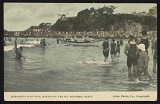
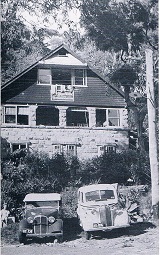

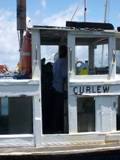
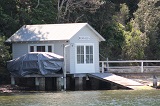
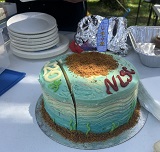
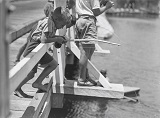
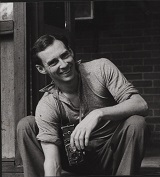
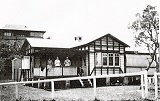
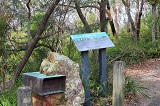
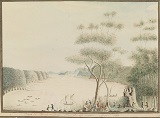
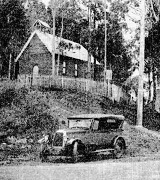
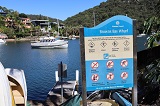

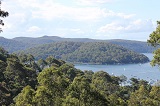

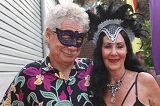


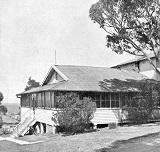
.jpg?timestamp=1749338652037)
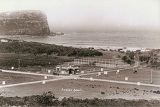
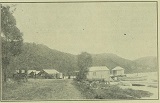
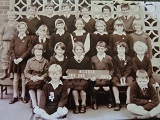
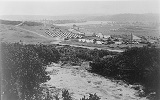
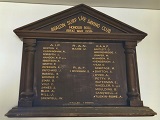
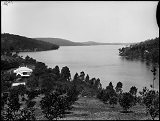

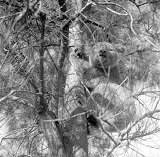

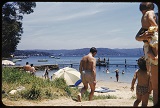

%20160.jpg?timestamp=1761986917234)
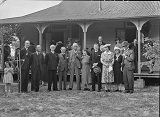

%20160.jpg?timestamp=1763755511567)
